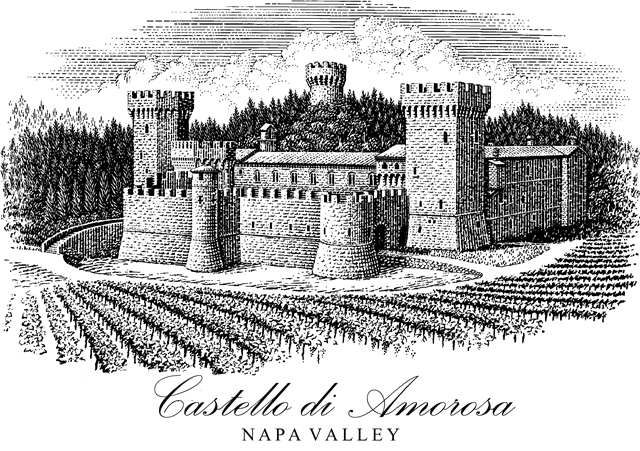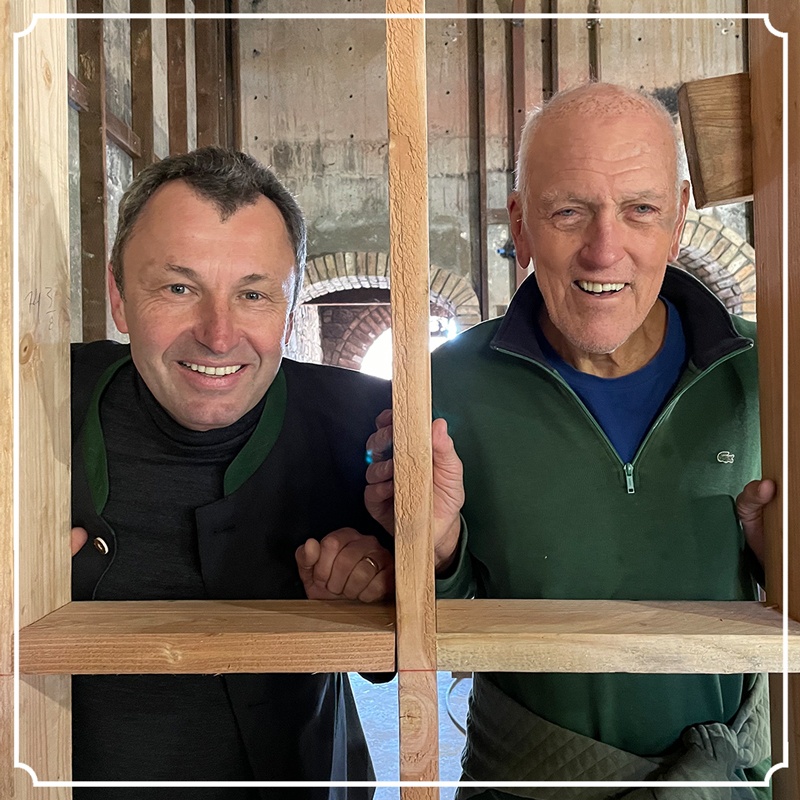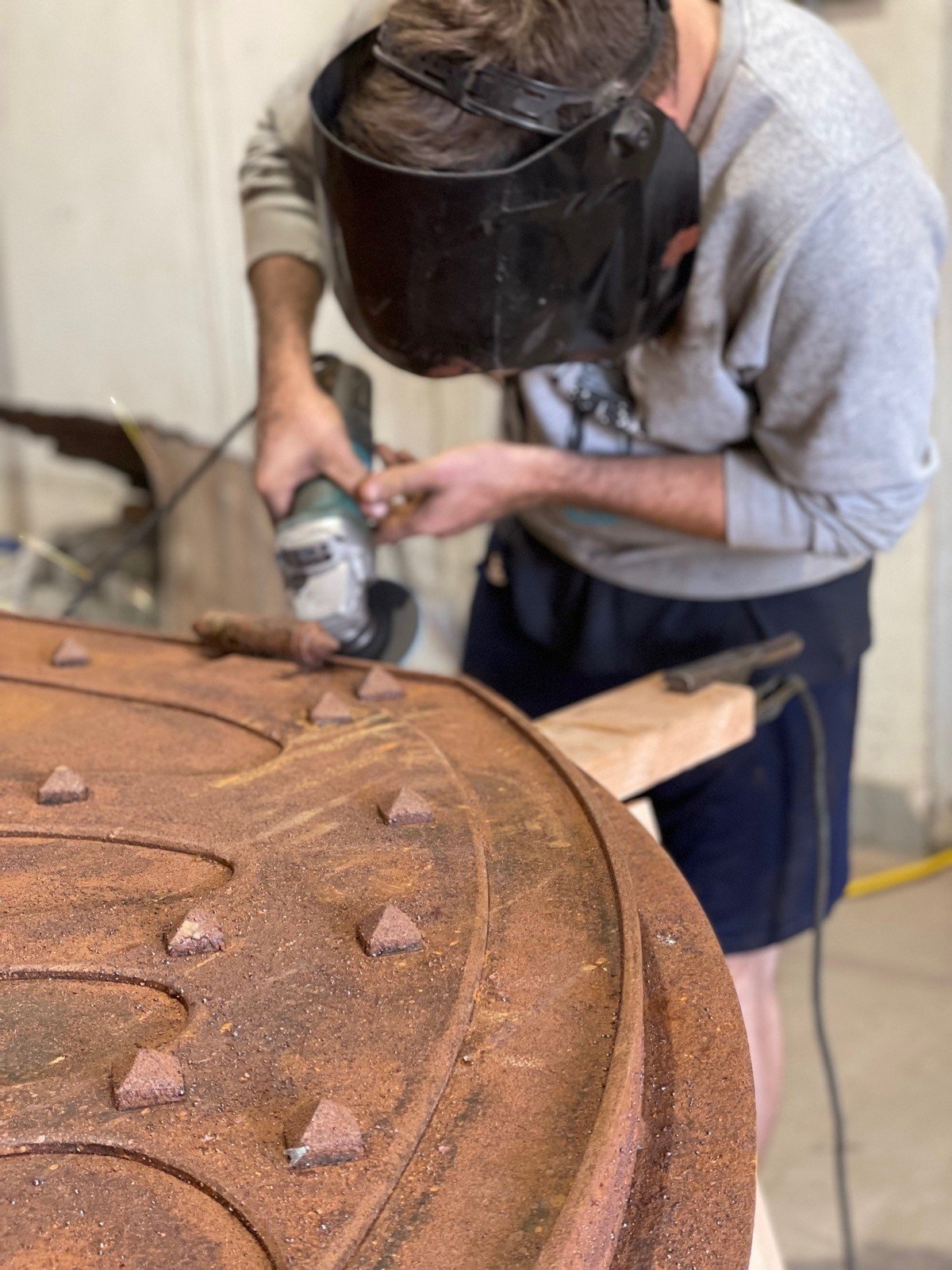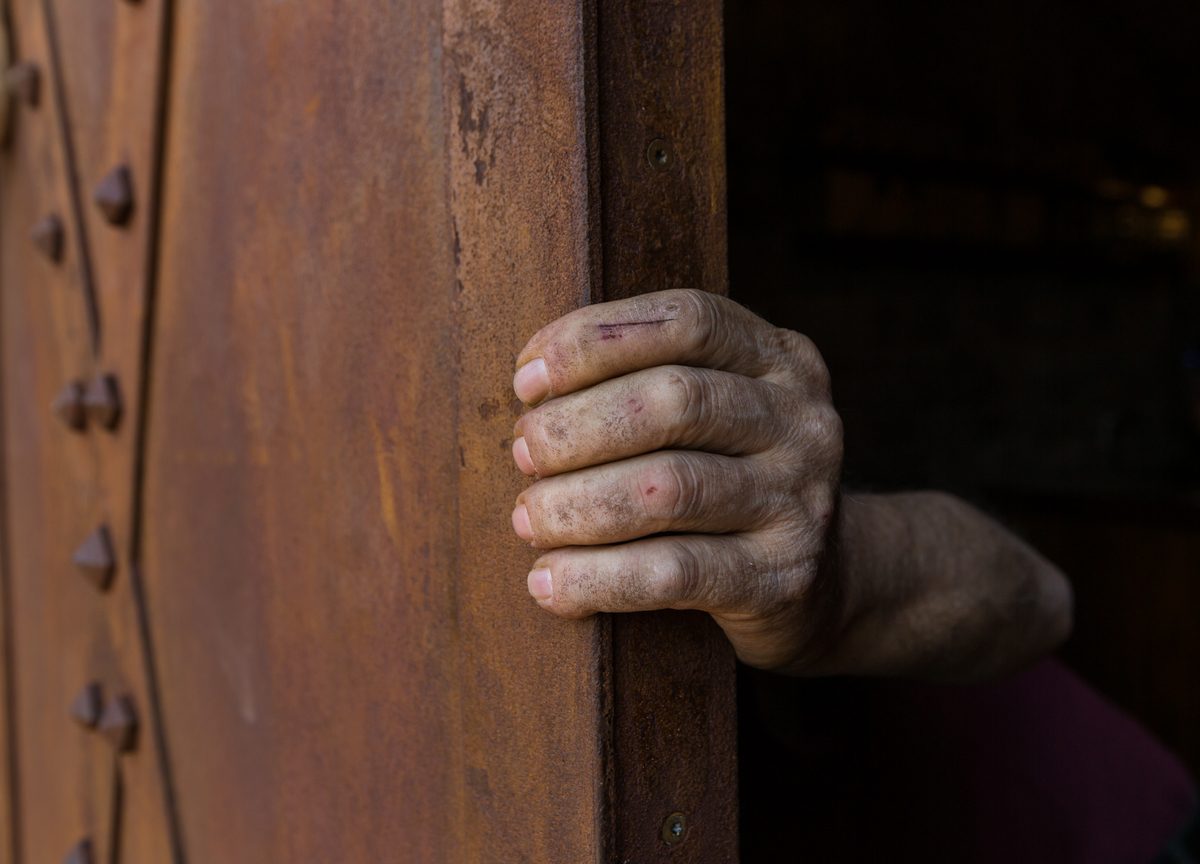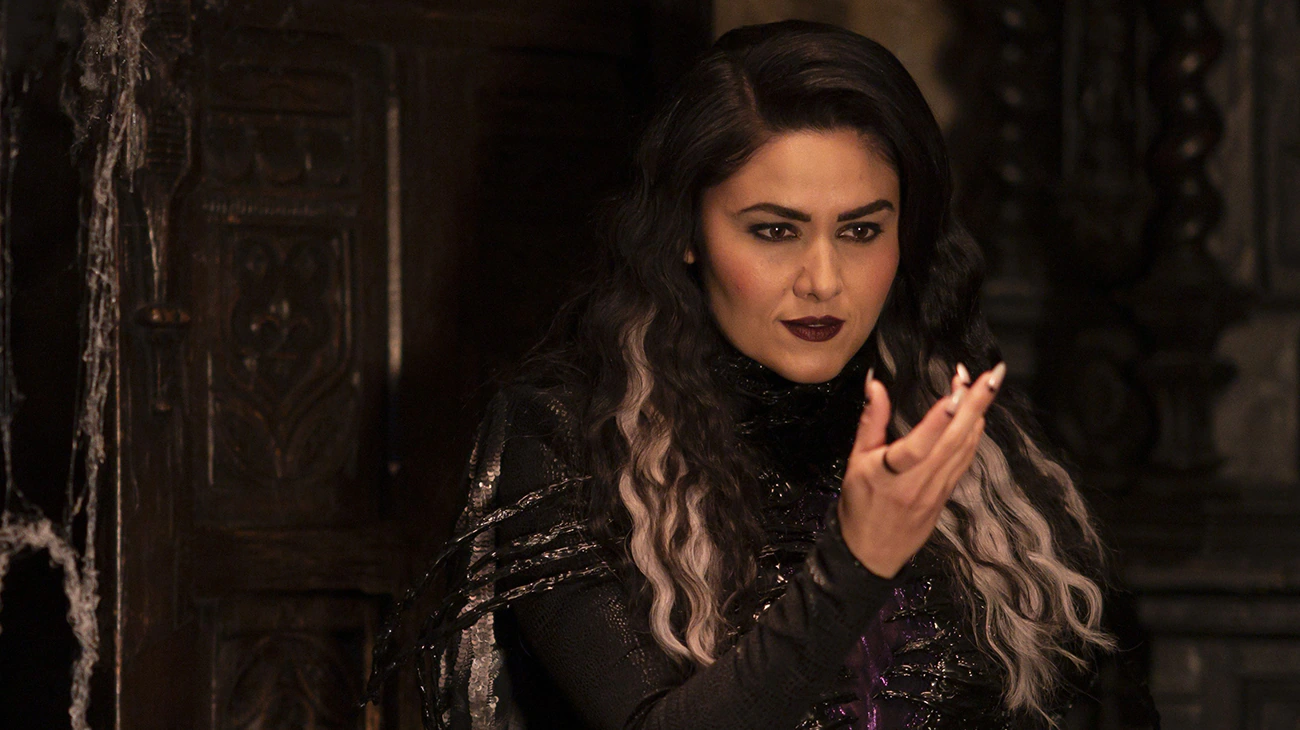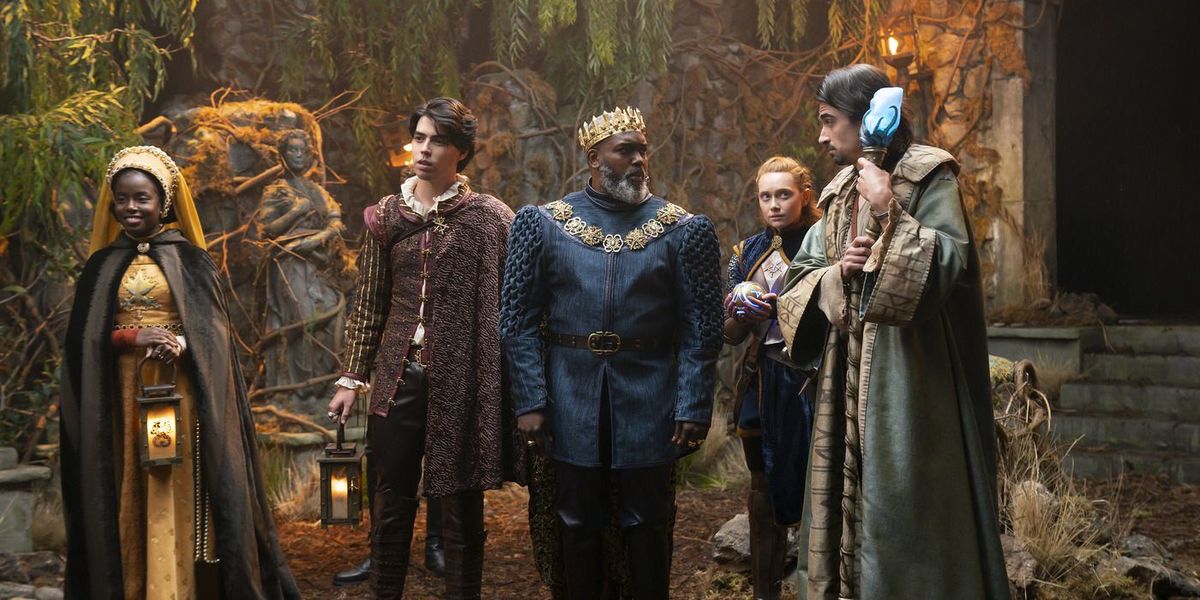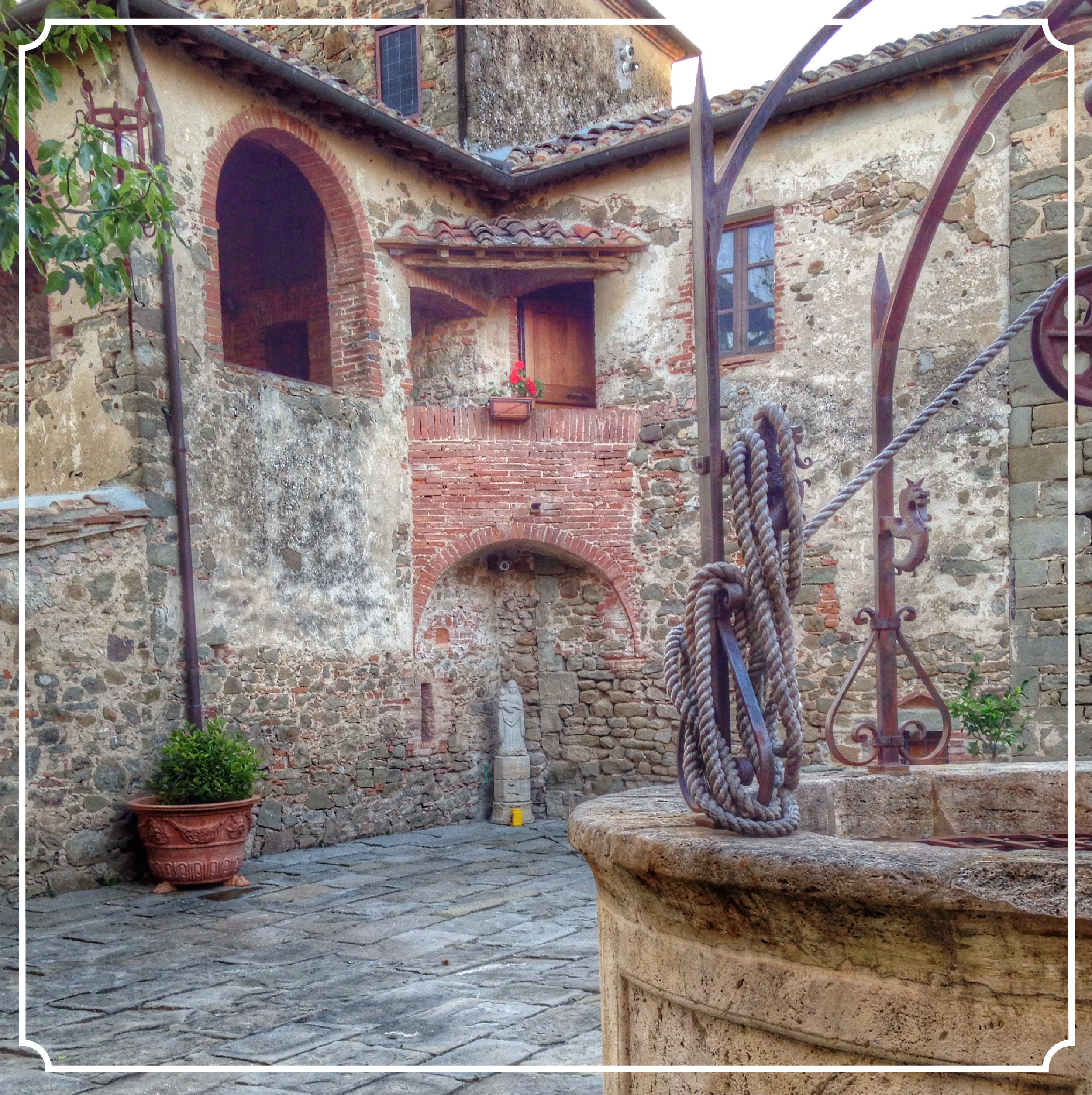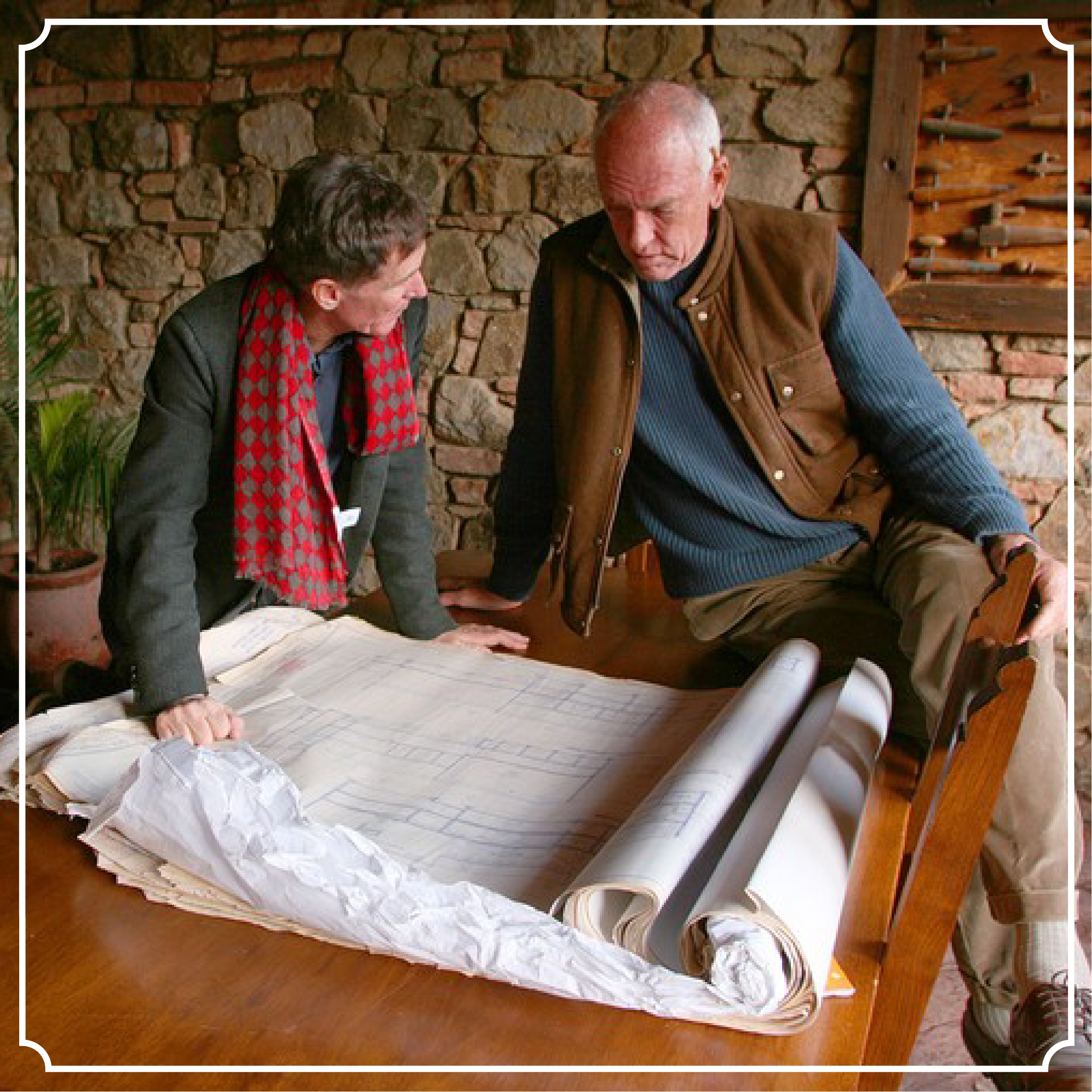Italians Come To Castle To Install Doors And Windows

Jim Sullivan
Jim Sullivan, Vice President of Public Relations and Marketing spearheads Castello di Amorosa’s publicity and marketing initiatives.
With over 20 years of marketing, public relations and business development experience with professional motorsports teams and in a variety of healthcare organizations in Southern California, Jim first joined Castello di Amorosa in 2008 as Public Relations and Marketing Manager.
An avid cyclist, Jim fell in love with wine and wineries while exploring the Washington State countryside. His love of wine was reinforced during subsequent trips to the Napa Valley to visit family.
Jim holds an MBA from the University of Redlands and a Bachelor of Science from Central Washington University. He resides in Calistoga, Calif.
Italians Come To Castle To Install Doors And Windows
It has been a whirlwind couple of years since Dario Sattui started the process of sourcing the materials to rebuild the Castello di Amorosa Farmhouse. Situated on the crush pad and overlooking Castello’s Diamond Mountain District Cabernet Sauvignon vineyard, the Farmhouse needed lots of love. And who better to bring the love than designer and builder himself, Dario Sattui.
“The September 2020 Glass fire destroyed our 9,000 square foot farmhouse which we are rebuilding,” said Dario Sattui, Creator of Castello di Amorosa, a 14th century authentically built Tuscan-style castle and winery located in Calistoga, Napa Valley. “The fire destroyed over 100,000 bottles of the castle’s wine, almost all our offices, a wine laboratory, a bottling line, a truck, fermenting wine, and a forklift,” he added.
Following several trips to Italy to source the same old-world material used to build the Castello, Sattui saw the fruits of his search arrive on the Napa Castle loading dock – Doors, beautiful hand-crafted doors.
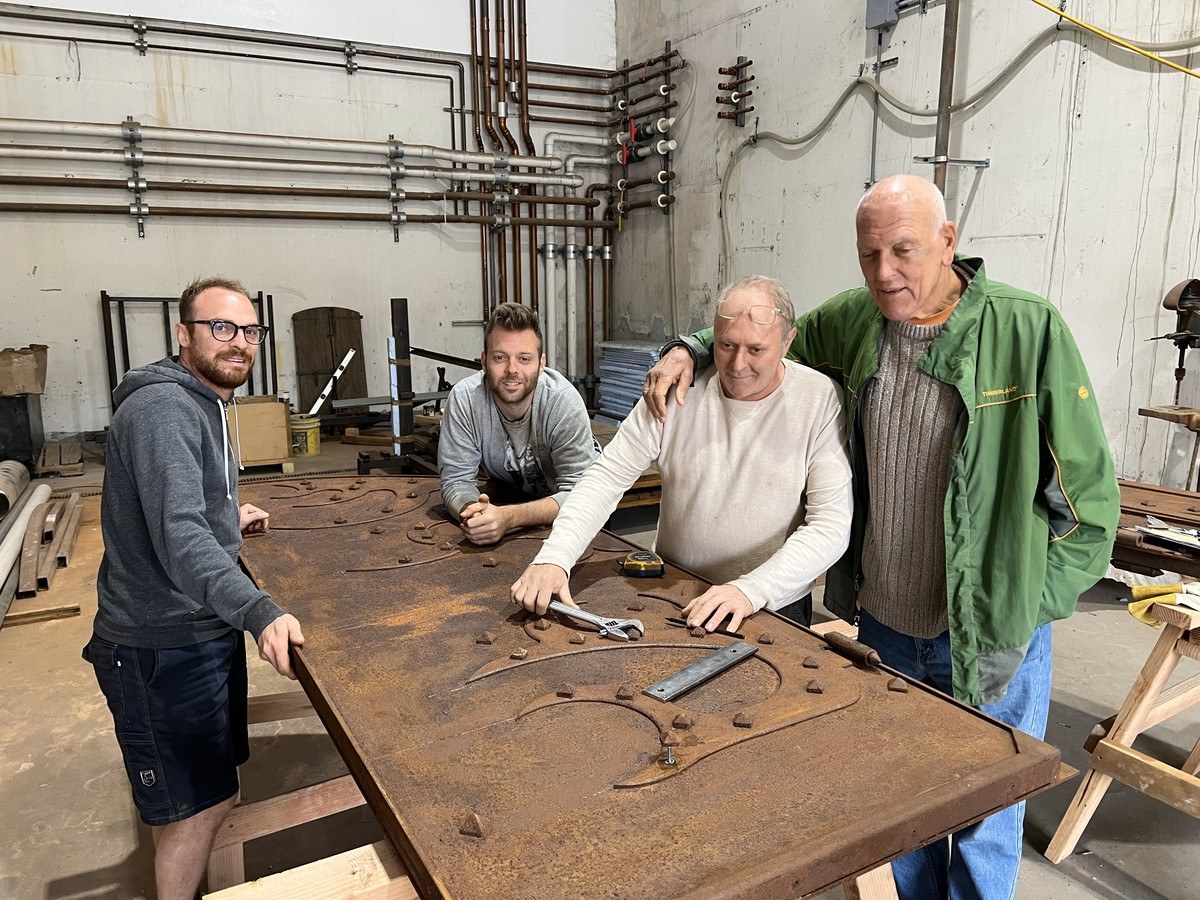
Giorgio Mariani, a master blacksmith, his son Mircu and Luca, all blacksmiths came to the castle from Assisi, Italy in August to install the new Italian doors and windows they made along with a carpenter in Italy. The three Italian craftsmen hand-made every nail and all the iron decorative pieces over the open fire, the traditional way it used to be done.
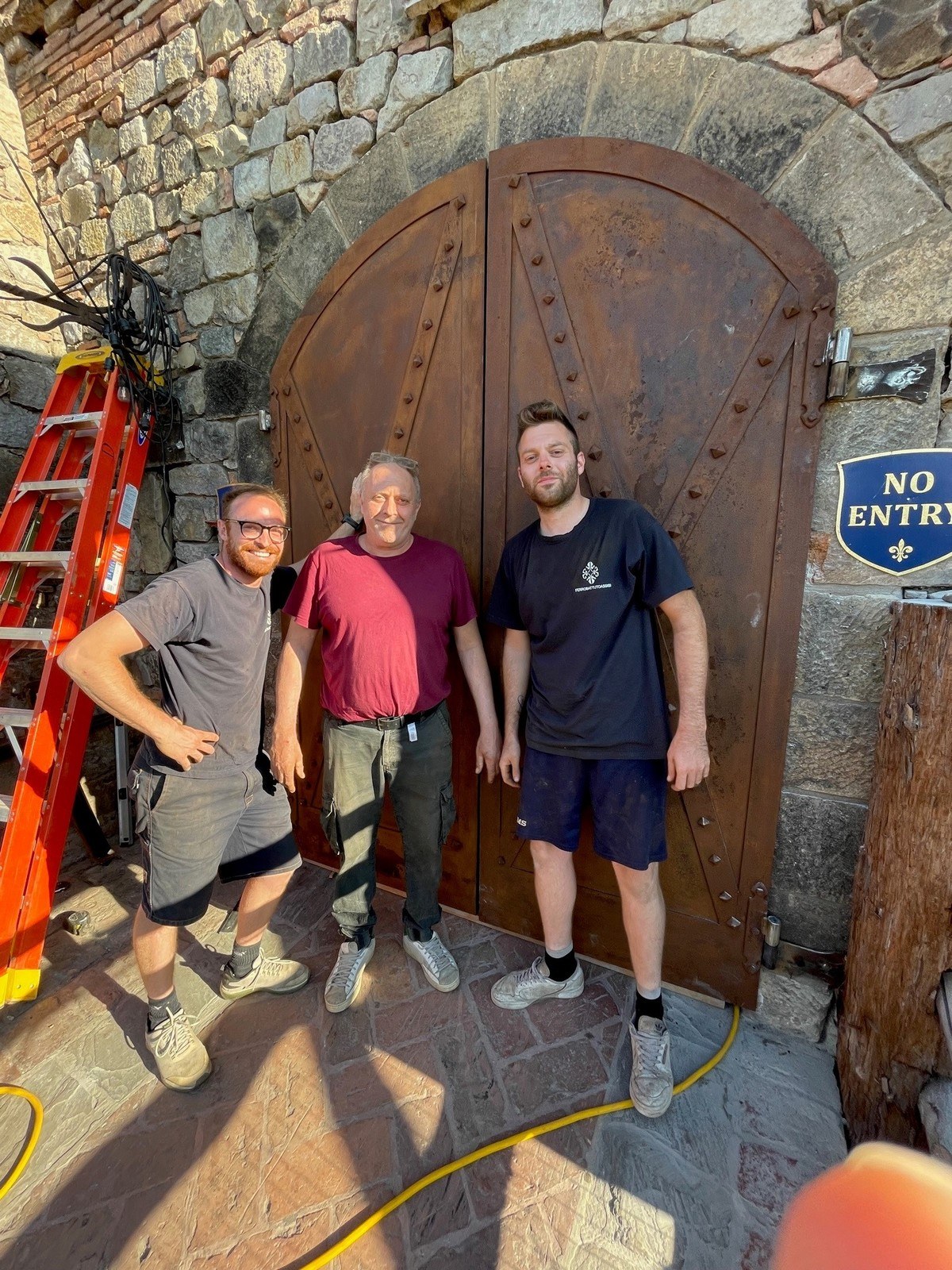
The work is beautifully done, of which Giorgio is very proud. Giorgio and a carpenter made all the original doors, windows, iron lamps and gates almost twenty years ago, before the castle opened. We have since become good friends.
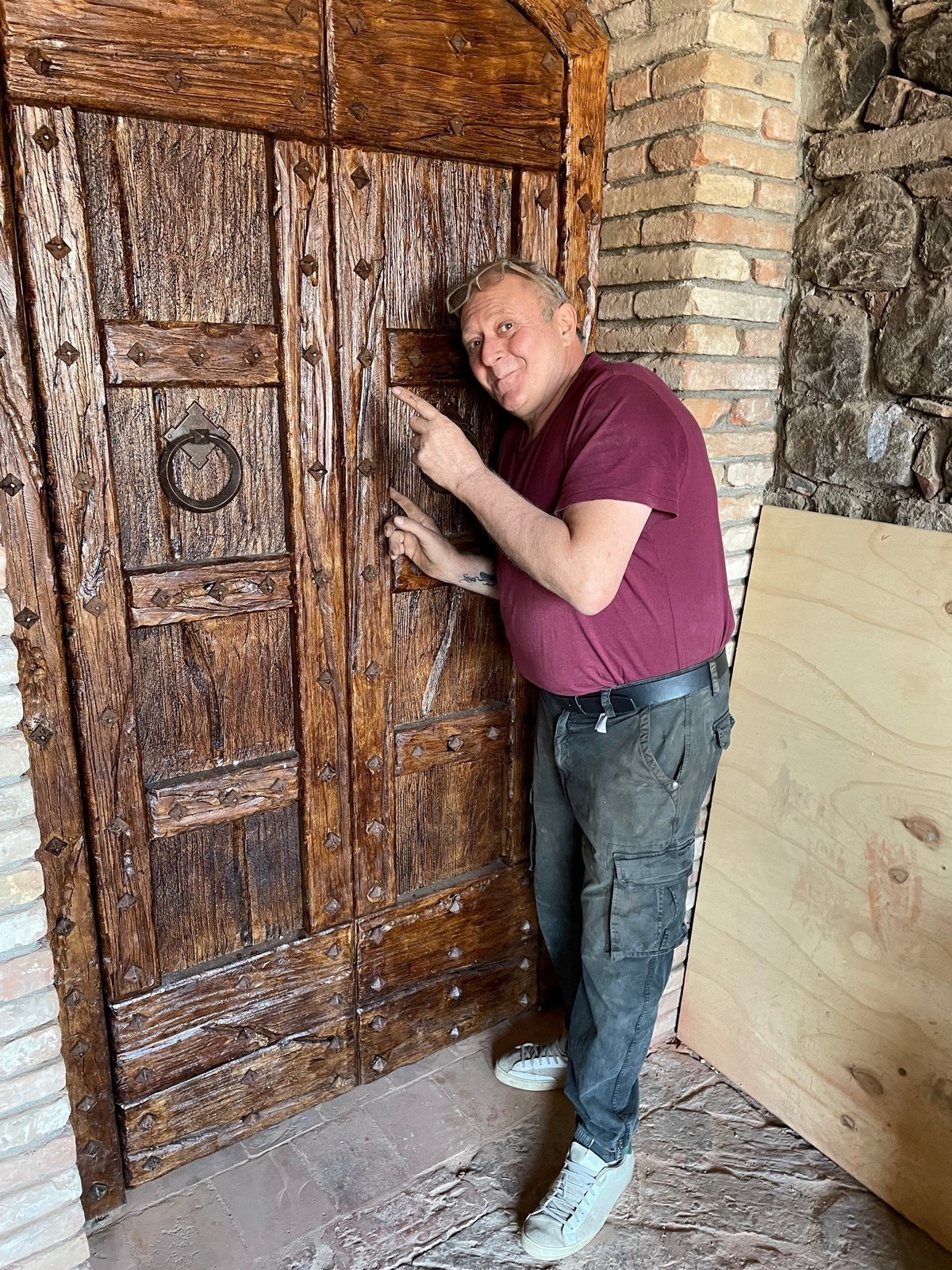
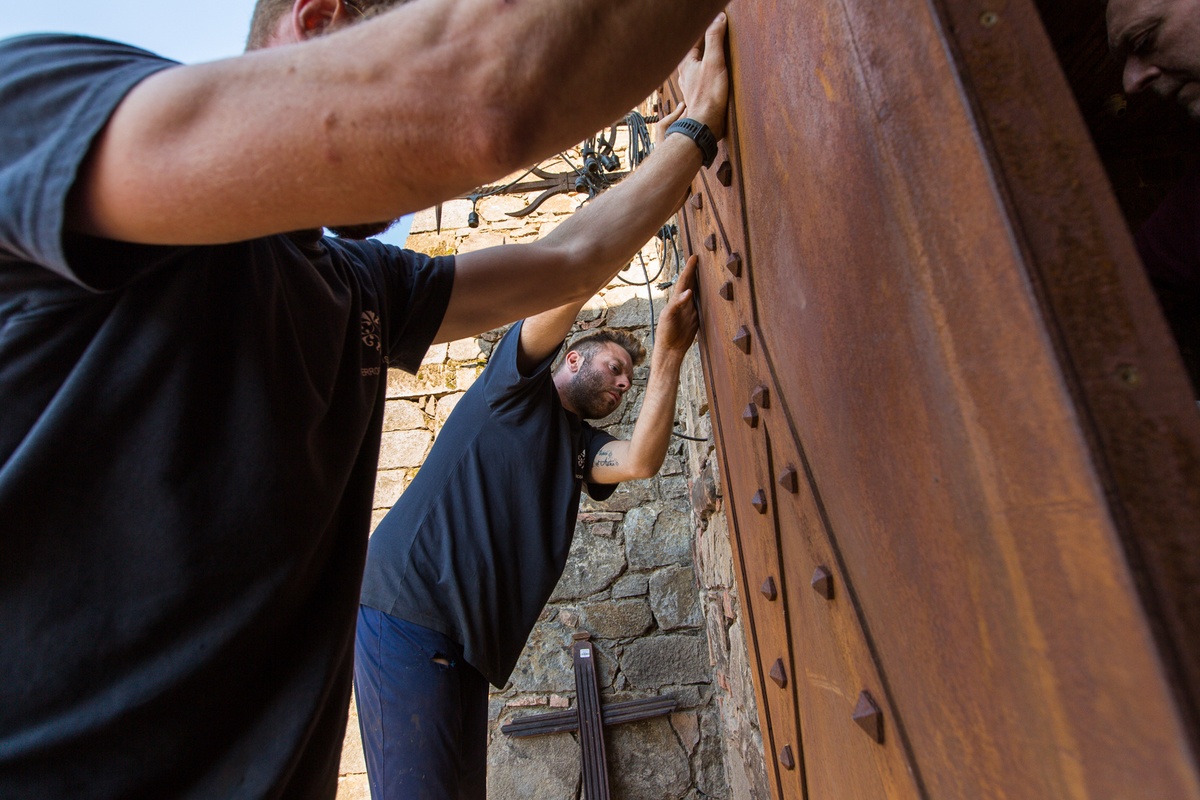
Cleaning The Ocean

Dario Sattui
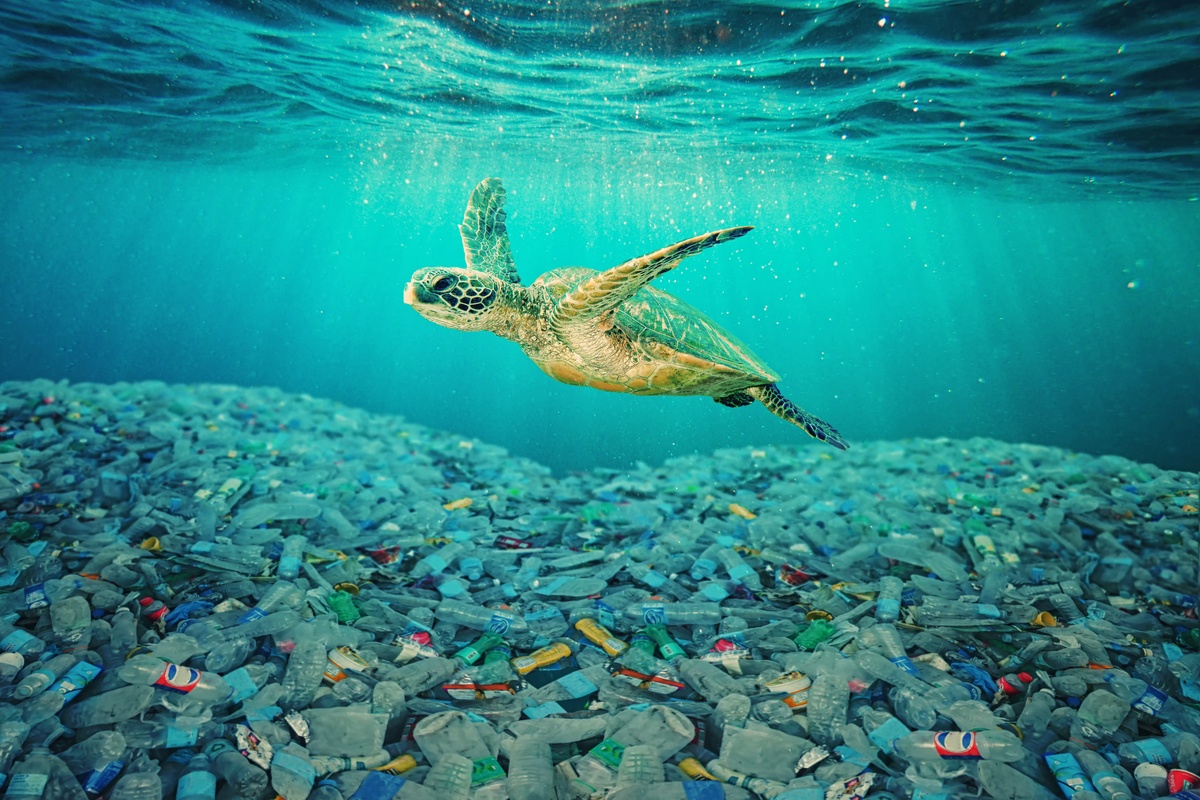
Cleaning The Oceans from Plastic
How many people realize that there is an island of trash – mostly discarded plastic – in the Pacific Ocean that is 3 times the size of France, a large European country? 8,000,000 metric tons of discarded plastic escapes into the ocean EVERY YEAR! That is the equivalent of placing five garbage bags full of trash on every foot of coastline around the world. This plastic is killing sea life and birds at an alarming rate.
How many of you realize that plastic production rose from 2.3 million tons in 1950 to 448,000,000 million tons by 2015? Production is expected to double to 896,000,000 tons by 2050.
Plastic contains additives which makes it unable to break down for 400 years or more. Half of all plastics ever manufactured have been made in the last 15 years. Landfills are overflowing with waste plastic. China has now refused to take our unwanted plastic into its country as it used to several years ago.
THIS IS AN ALARMING PROBLEM.

As I deeply care about our environment, I have invested in a company, Resynergi of Santa Rosa, California, which will take most discarded plastic and turn it into energy and/or chemicals for making new virgin plastics without harming the environment in the process. This process is called CMAP, Continuous Microwave Assisted Pyrolysis.
Discarded plastic is collected and heat of 1000 degrees Fahrenheit is applied in an oxygen-free environment causing the solid material to form a gas. The gas is then cooled into a liquid product (fuel) or it can be made into new plastic.
I am hopeful that we will all come together to solve this global issue.Otherwise, we will have a very contaminated environment which may not be worth living in.

There are several organizations across the world that fight to make the ocean a cleaner place. New technologies have seen tremendous advances in cleaning ability. Places like The Ocean Cleanup, The Blue Marine Foundation, Ocean Conservancy and Oceana all strive to make impacts, these are just a few companies but there is a long list of others. We recommend doing your own research before giving money or time. We just wanted to highlight some of the different places making a true impact.
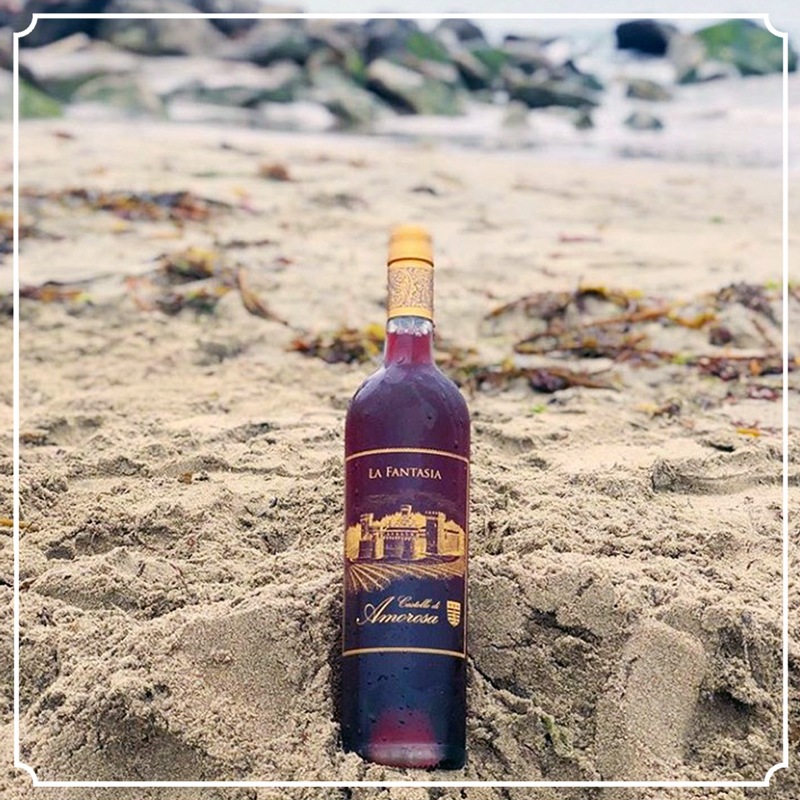
Planting Olive Trees

Bradley Aden
Our First Olive Oil Trees
We are proud to announce the first planting of our Olive Trees surrounding the Castle in Napa Valley. Watch above as President Georg Salzner & vineyard manager David Bejar plant our first olive trees at The Castle! This continues our recent string of sustainability efforts at the Castle.
We planted 12 different varieties of Olive Trees surrounding Castello di Amorosa, these olive trees are known to make a superior olive for oil production. Many of these trees originate in Italy. We look forward to the first fully mature harvest in which we can produce our first olive oil.
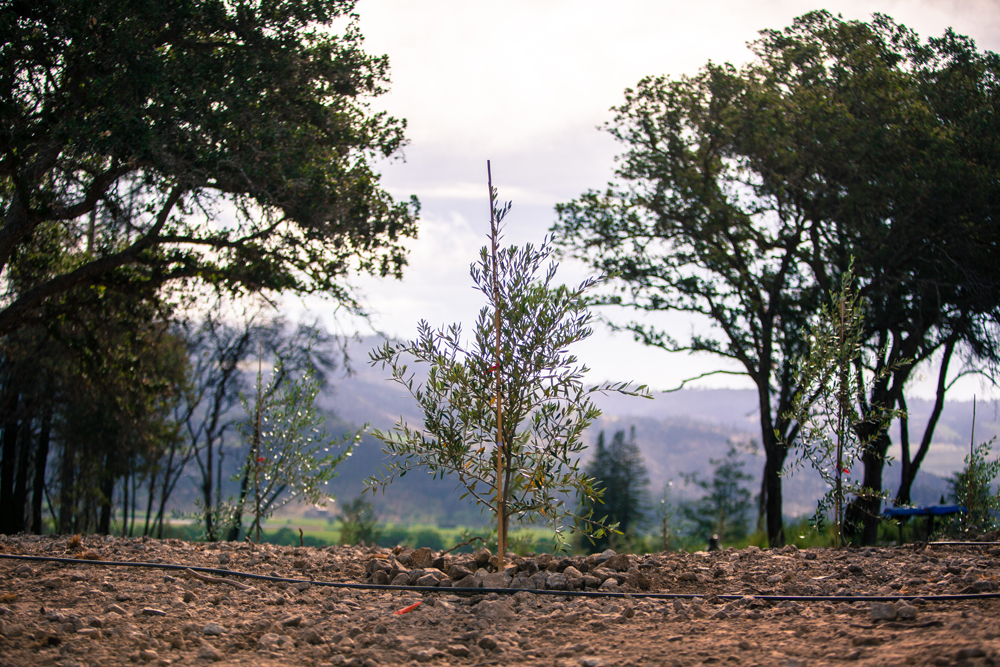
We are planting a total of 12 different olive tree varietals that surround the Castle. You can learn more about each specific type of Olive tree below.
Frantoio
If asked to pick our favorite olive in the bunch, that answer might just be the Frantoio olive. Frantoio Olive Oil is one of the most highly acclaimed oil varieties in the world, especially in the Tuscan regions of Italy. The olive boasts a stunningly dark, oval-shaped olive. Preferred picking time is early, while olives are still green and purple.
The flavor has been described as very fruity, notably aromatic and of high quality, with a stronger aftertaste than Leccino. The aftertaste has been described of almond and herbs.
This fast-growing Olive tree is known for its high yielding nature. They can reach a full grown height of 26 feet. It is known to produce plenty of plump medium-sized Olives, which are known to produce quality oil. They can also make a delicious treat when cured. These Olives are about 80% pulp, and they have a pleasant fragrance.
Olive Origin: Tuscany, Italy
Olive Color: Green-Purple, Purple-Black
Olive Pairing: Grilled Meat, Bruschetta, Legume & Vegetable Soups, Dressing Fresh Salads.
Olive Flavors: Fruity flavor with bitter and spicy notes. Aromas of fresh herb, tomato, lettuce, artichoke, apple, grain, rosemary, celery and almond.
Unique Traits of the Frantoio Olive
Most commonly the main component for a Tuscan style oil.
Consistently produces a high-yield, very fruity oil.
The medium size fruit ripens on the late side.
A self-compatible tree, but will benefit greatly from other pollinators.
One of the most popular olives in the world.
Grows More like Tree Than Bush
Leccino
Originated in Tuscany, grows very well in California and the northwest. Its olive oil flavor is delicate so it’s most commonly blended with Pendolino. But it’s also interplanted and blended with Frantoio, Coratina and Moraiolo to produce more flavor.
As mentioned above, Frantoio and Leccino cultivars are the principal raw material for Italian olive oils from Tuscany. Leccino has a very sweet and aromatic flavor.
A Small fruit with very small pit, it has a surprising amount of flesh. The fruit is purple-black, although it is advised to pick it when purple green at its optimal time. Oil volume is lower than other cultivars and delicate in flavor. The oil is mildly fruity and frequently blended with other cultivars’ oil. The delicate flavor can dissipate after time, as the oil has been known to have a short shelf life.
Olive Origin: Tuscany, Italy
Olive Color: Grey-Green
Olive Pairing: Cooked Fish, White Meats, Vegetables & Fresh Cheeses
Olive Flavors: The oil is very sweet and aromatic
Unique Traits of The Leccino Olive
Most commonly the main component for a Tuscan style oil.
Small Fruit
Short Shelf Life
Delicate Flavor
Commonly Used in Blends
Pendolino
Pendolino Olive Tree is an old Italian variety valued for its high fruit production as well as its crucial role as one of the best pollenizers for other olive varieties, often referred to as the universal pollenizers.
These slow growing trees can grow to about 20 feet tall in time. Pendolino is named for its pendulous branching characteristic, making it ideal for manual cultivation.
Its fruit size is generally larger than Frantoio but smaller than Leccino. It has a slightly lower oil content with relatively early ripening fruit. The flavors have been described as fruity and sweet upon entrance, while turning bitter and ending with a characteristic spicy. Notes of bitter almond and more lightly fresh grass and artichoke have been described.
Olive Origin: Italy
Olive Color: Grey-Green
Olive Pairing: Grilled Salmon, Risotto with Shrimp, Pasta, Bread, Vinaigrettes
Olive Flavors: Fruity and Sweet upon entrance, Bitter and Ending with a Spicy Kick. Notes of Bitter Almond, Grass & Aartichoke.
Unique Traits of The Pendolino Olive
The Universal Pollenizers
Early Ripening
Old Italian Varietal
High Production
Balanced Flavors
Maurino
The Maurino olive tree is Tuscan in origin. It’s a good pollinator but self-sterile so it needs another tree (often Frantoio, Leccino or Pendolino). Its fruit is small, but like the Pendolino cultivar, its fruit is abundant. Additionally, both cultivars actually look very similar in appearance and exhibit the graceful, pendulous branch form.
Prized for its sweet and delicate oil, as well as being tolerant of very low temperatures, it’s ideal for cooler climates and dense plantings. Small fruit with very small pit., It has a surprising amount of flesh. The oil is very sweet and aromatic. The shelf life is short.
Olive Origin: Tuscany, Italy
Olive Color: Grey-Green
Olive Pairing: Green Salads, Raw Vegetables,
Olive Flavors: The Oil Sweet and Aromatic
Unique Traits of The Maurino Olive
Tuscan Origin
Good Pollinator
Needs to Be Paired with other trees to survive. (often Frantoio, Leccino or Pendolino)
Small Fruit
Sweet & Delicate Oil
Short Shelf Life
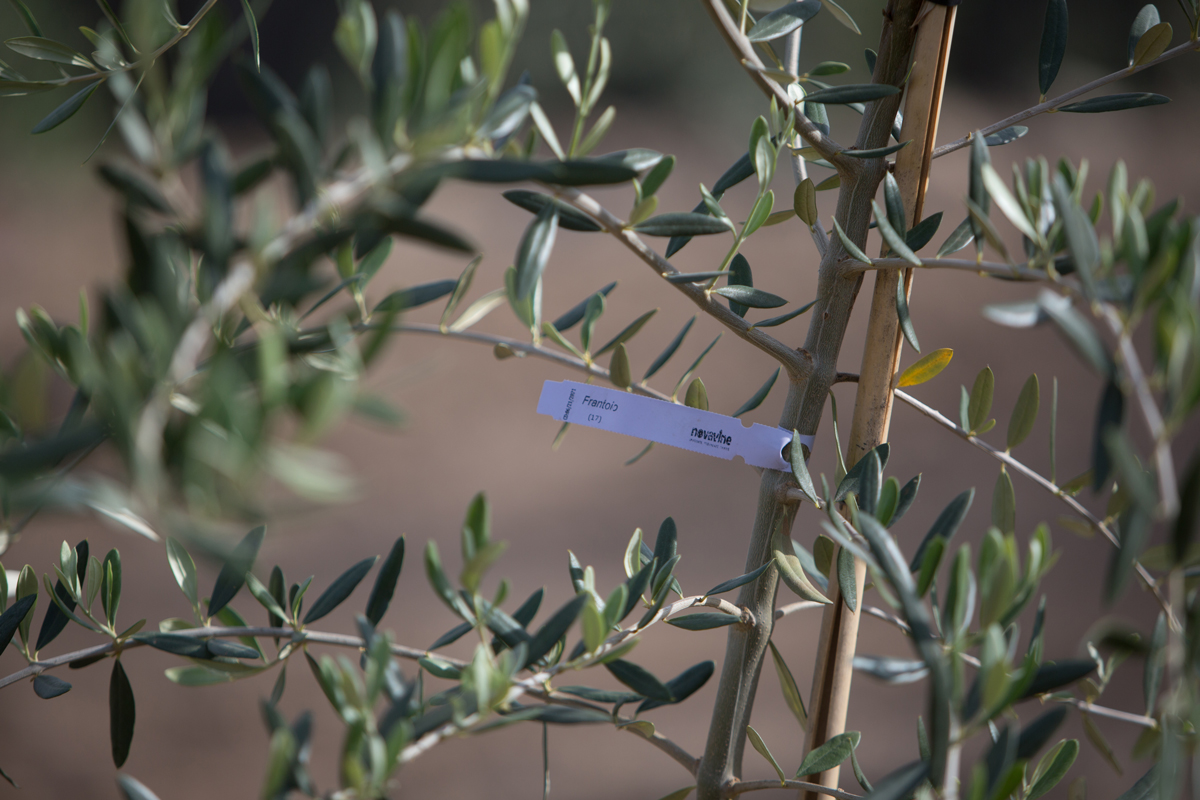
Mission
The Mission Olive Tree originated in California way back in 1769, where they were planted by Franciscan priests as they established Missions among El Camino Real. Popularity grew due to its growth in California over the years when interest in olives and olive oil increased. The Mission Olive Tree can grow up to 30 feet, with its olives maturing October through November.
The only American olive cultivar listed by the International Olive Council in its World Catalogue of Olive Varieties. After the Manzanilla and Sevillana olive varieties, it remains one of the more common cultivars in the state.
These medium olives can grow up to an inch-and-a-half and turn deep eggplant purple when mature. While the dark fruit is popular, the Mission is also harvested for it green fruit which is known for its wonderful, mild grassy flavor both in cured table olives and pressed to oil. Mission olives have a unique fruity flavor and scent. The fruit and oil pairs well with fish, chicken, or as a dip for freshly baked bread.
Olive Origin: California 1769
Olive Color: Deep Eggplant Purple – Blackish
Olive Pairing: Best Used with Bread, Fish or Chicken
Olive Flavors: Mild Grassy & Fruity Flavor
Unique Traits of The Mission Olive Oil
Endangered Varietal
Wonderful Fruit to Brine or Press for Oil
One of the Hardiest Olive Varieties
Attractive Specimen
Drought Tolerant
Widely Adaptable
Fragrant Spring Flowers
Mid Season Fruiting Time
Versatile Used for Olive Oil & Table Olives
Manzanilla
The Manzanilla is an ancient olive tree that have been grown since ancient times, they are known to thrive in the heat. Believed to be a native of the Mediterranean, the drought tolerant Manzanillo Olive can live for hundreds of years, enduring droughts, heat and poor soil conditions. Manzanilla olives are well known for its rich black olives that can be pickled or pressed for oil. They are known to have crisp texture and a slightly smoky, almond like flavor.
This Manzanillo has a slow growth rate and young trees may take time to develop substance. The tight growth pattern creates a fuller crown, making the Manzanillo Olive a popular shade tree in Southern California. It can grow up to 30 feet, so it is an ideal choice for almost any style architecture.
Easy to care for and very resilient, the evergreen Manzanillo Olive prefers deep rich soil, but it can tolerate stony, shallow soils as well.
Olive Origin: Mediterranean
Olive Color: Black – Green
Olive Pairing: Pair them with: Swiss, Manchego, or Gouda cheese; dry Spanish Cava or Fino. Olives themselves are often Suffed with a Creamy Blue Cheese, Pimentos, or Garlic.
Olive Flavors: Crisp Texture and a Slightly Smoky, Almond like Flavor.
Unique Traits of The Manzanilla Olive
Cold Hardy and Resistant to High Summer Heat
Drought Resistant
Versatile
Used for Table Fruit
Excellent Quality Fruit
Versatile Landscape Tree
Itrana
Native to the Italian region of Lazio (Lazio). The Itrana olive tree produces high quality black table olives and high quality extra virgin olive oil.
The oil is known for its intense and fruity flavor, with bitter and spicy feel. Aromas of cut grass are common with more subtle touches of artichoke or slight green almond feel.
The olives themselves are, asymmetrical and of medium size (3-5 grams). At harvest the olives are dark wine color, freckled with a whitish dusting. The oil is of good quality pleasing in taste and is noted for continually winning awards for taste.
Olive Origin: Lazio, Italy
Olive Color: Dark Wine Color & Green
Olive Pairing: Crusty Artisan Breads
Olive Flavors: Intense and Fruity Flavor, with Bitter & Spicy of Average Value. Aromas of Cut Grass are Common with Subtle Touches of Artichoke or Slight Green Almond Feel.
Unique Traits of the Itrana Olive
Resistant To High Heat & Cold
Italian Varietal
Green & Dark Producing Olives
Award Winning Oil Produced
Excellent Quality Fruit
Coratina
Coratina olive oil gets its name from its place of origin, a town in the Italian countryside known as Corato. This olive oil has a very fruity, tangy and bitter taste, so much so that traditionally this particular kind of olive oil has been used to cut other olive oils with a less marked flavor.
Depending on the climate, olive picking may go from early October to late January. The integrity of the fruit will determine a low acidity level, fruity notes and a high content of antioxidants in the final product.
The Coratina extra-virgin olive oil is characterized by the fruity notes of green olives, followed by sensations of freshly-cut grass and bitter almonds. By genetic makeup, Coratina is one of the olive cultivars that synthesize the highest content of phenolic compounds. Freshly-pressed, the Coratina olive oil may taste bitter and unbalanced, with a bit of a slightly sharp sensation. The high phenolic content, along with the triglyceride composition, contributes to the exceptional oxidation stability of the Coratina extra-virgin olive oil.
Olive Origin: Corato, Italy
Olive Color: Dark Red – Light Green
Olive Pairing: Used to Cut other Olive Oils with a Less Marked Flavor.
Olive Flavors: Fruity, Tangy and Bitter Taste
Unique Traits of the Coratina Olive
High Phenolic Acid Content, produces Incredibly Stable Oil that Oxidizes Slowly.
High Acidity Results in Sharp Oil that is Rich in Flavor and Displays a Sweet Aroma.
Can Produce in a Variety of Climates and Soil Conditions from Sandy Coastal Locations to Hot Deserts with Rocky Soils.
Minimal Watering Once Established.
Smaller Fruits
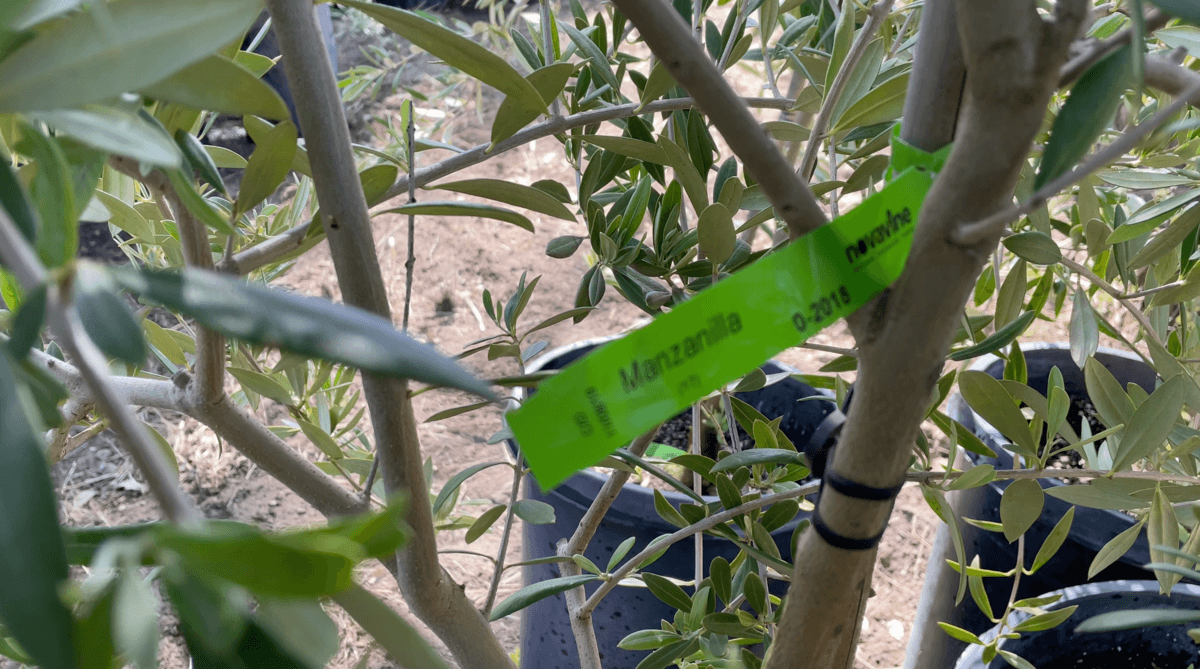
Columella
Originating in France, Columella is known for its resistance to cold. When harvested green, Columella yields an aromatic, sweet and fruity oil with a good balance of bitter and pungent notes. Grassy and herbaceous flavors are enhanced by tropical and floral flavors.
Fruit ripening is medium early. Columella is unusual among the French cultivars normally grown in California in its suitability for early harvest. The fruit is fragile and prone to bruising; it can be damaged by windy storms as it is ripening, so an early harvest is advisable.
Olive Origin: France
Olive Color: Green
Olive Pairing: Fried Potatoes, Stir-Fry, Chocolate Ice Cream
Olive Flavors: Aromatic, Fruity, and Sweet Flavor, Balanced with Pungent and Bitter Flavors too.
Unique Traits of the Columella Olive
Adapts Well to Colder Weather
Versatile Smooth Taste
Fruit Can be Easily Damaged
Fruit is Fragile, Prone to Bruising
Cerignola
Cerignola olive tree (Oliva di Cerignola), is an Italian olive variety present in the Apulia region. Its origin is estimated in the XV century, when it was introduced by the Aragonese. The olive tree produces very large size olives, which are popular table olives.
Cerignola may offer the most beautiful and delicious olives of any tree. It ripens early and is generally brined soon after turning a celadon green. Drupes are large, nearly a half ounce of crisp, buttery meat.
The flavor of the Cerignola olive has been described as mildly tart and buttery. It is known for containing very balanced flavors, thus making it one of the most versatile olives.
Olive Origin: Apulia Region, Cerignola, Italy
Olive Color: Celadon Green
Olive Pairing: Pair up these buttery beauties with zippy hard cheeses, like Parmigiano-Reggiano, or mild and creamy mozzarella and Genoa Salami. Black varieties are great paired with smoked cheeses.
Olive Flavors: Mildly Tart and Buttery.
Unique Traits of The Cerignola Olive
Estimated Origins Go Back to The 15th Century.
Large Size Olives
Ripens Early
Versatile Olive Used for Both Oil Production or Table Olives
Balanced Flavors
Lucca
The Lucca Olive Tree is a high yielding tree, which is used for high amounts of olive oil. The Lucca Olive itself was developed at the University of California, Davis by Professor Hartman. These trees will grow beautifully in your yard, and will produce large quantities of olives.
It also has good frost resistance and is closely related to Frantoio olive. A vigorous variety well suited to planting in California. The oil produced from the Lucca has been described by tasters as having a sweet buttery flavor, and slightly bitter.
Olive Origin: California
Olive Color: Green
Olive Pairing: Used to cut other olive oils with a less marked flavor.
Olive Flavors: sweet buttery flavor, and slightly bitter.
Unique Traits of The Lucca Olive
Sweet, Buttery Flavor
Developed closely related to Frantic.
Developed by University Professor
High Yields
Hojiblanca
The name means “white leaf” and refers to the color of the back side of the leaves. This medium sized fruit generally ripens late and is very cold resistant. These trees are capable of adapting to extreme soils and climates. The fruits ripen very slowly and delay the harvest, a fact that leads to certain amount of “vecería”.
A balanced olive that has a wide range of flavors. The oil is not long lasting but is exceptional. The Hojiblanca olive is highly valued due to the excellent quality of its pulp and for its great rusticity.
The Hojiblanca is a prestigious varietal, currently in great demand especially in Spain due to the Hojiblanca extra virgin oil which can be extracted from its fruit, it is also widely used as a table olive.
On many occasions, the extracted oil is combined with other oils in order to improve the flavor and the oils properties. This oil is recommended by many specialists due to its excellent health reputation.
Olive Origin: Spain
Olive Color: Green
Olive Pairing: Red Apple Balsamic Vinegar, Sicilian Lemon White Balsamic Vinegar, Leafy Green Salads, Bitter Green Salads, Garden Salads, Raw Vegetables., Roasted/Grilled Veg, Broiled Fish.
Olive Flavors: Slightly sweet to start with a bitter taste of unripe fruits and an almond aftertaste
Unique Traits of The Hojiblanca Olive
Known for its health benefits
Great Demand
Versatile Olive Used for Both Oil Production or Table Olives
Late Ripening
Excellent Quality
Balanced Taste
Large Fruit
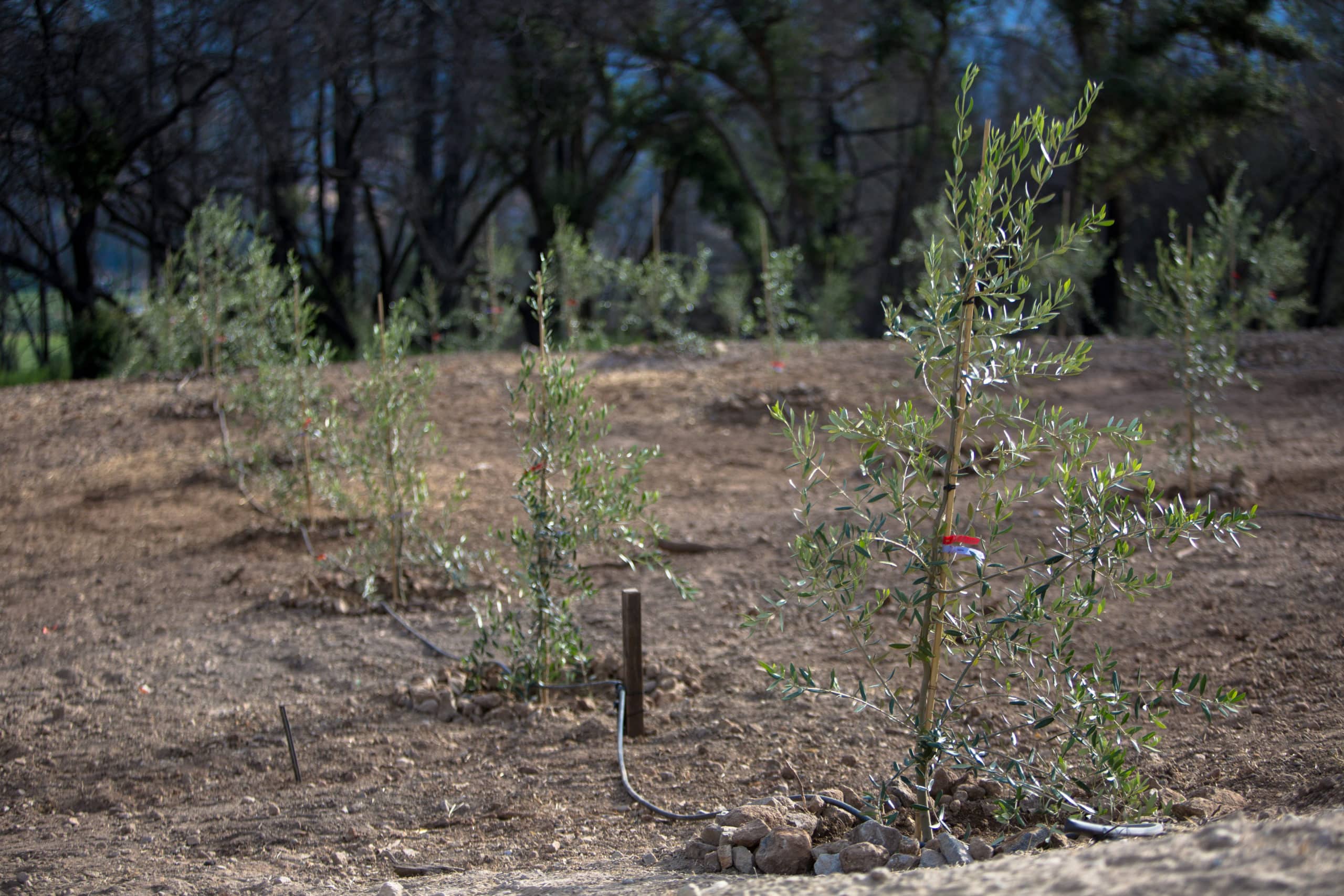
Although these trees won’t be producing olives worthy of pressing into olive oil for at least five years, we do make Olive Oil exclusively from olives harvested at our own Morning Dew Ranch estate property in the Anderson Valley located in Mendocino County.
These mature olive trees grow on a small patch of sloped hillside adjacent to some of the Castello’s most prized Pinot Noir vines. These trees mature under the watchful eyes of both our Winemaker and Vineyard Manager.
This Morning Dew Ranch Olio Nuovo (which means, new oil) differs from your typical Olive Oil. Taken straight from the press, this freshly pressed oil has all the natural flavors left inside the oil. Cold Pressed under 50 degrees, harvested locally from the Castello’s own estate vineyard. Here at the Castle, we are one of the first in the Napa Valley to sell Olio Nuovo.
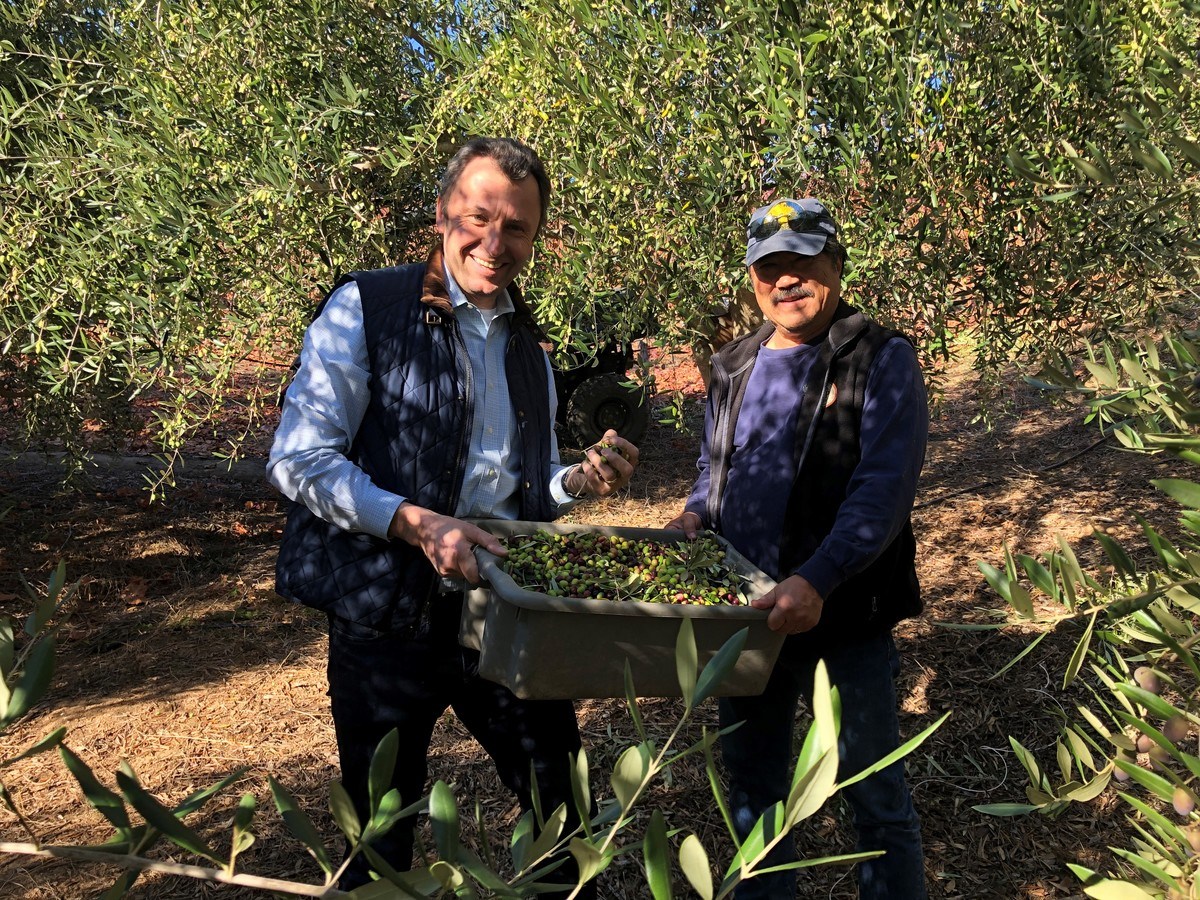

Disney's The Quest

Bradley Aden
Disney’s The Quest – Filmed on Location!
We are excited to announce the premiere of Disney’s The Quest on May 11th, the show features a competition series that was filmed here at Castello di Amorosa from December 2020 to March 2021. The Quest will premiere on their streaming service Disney+. This high paced show features a bevy of challenges, mazes and puzzles throughout the Castle. This will be the second season of The Quest.
Brought to the screen by the Academy Award- and Emmy-winning teams behind “The Amazing Race” and “The Lord of the Rings”. This ground-breaking, immersive, hybrid competition series drops eight real-life teenagers into the fantastic, fictional world of Everealm, where they must save a Kingdom by fulfilling an ancient prophecy. Everealm has long been a land of unrivaled beauty and powerful magic. Now, the realm is threatened by a powerful evil Sorceress. These eight teenage strangers known as the Paladins, must face a series of challenges in order to restore balance to Everealm. Throughout the eight-episode series, these heroes are immersed in a fantasy world come to life complete with a castle, royals, ethereal Fates, all forms of mystical creatures and a Sorceress intent on destruction and power.
Producer Rob Eric, said, “The Quest is a truly unique unscripted show as it takes contestants into a fully immersive world of magic and fantasy. There is no better partner than Disney+ for this type of enchanted storytelling.”
Executive producers Jane Fleming and Mark Ordesky commented “We’re doing something magical that has never been done at this level. We’re taking real people and putting them in a fully realized fantasy story, conceived and built by incredible artisans in every department. It’s an immersive, real-life hero’s journey for these eight normal teenagers, who transform before your very eyes. It’s an exciting new form of storytelling.”
Pack your bags (and swords), we’re headed to Everealm. Embark on a world of fantasy in #TheQuest, an Original series, streaming May 11 only on #DisneyPlus. For more updates, subscribe to Disney, Pixar, Marvel, Star Wars, and National Geographic.
Filming took place throughout the Castle rooms and spaces. There was also extensive filming done in the forests surrounding Castello di Amorosa. Be sure to tag us #TheCastello in your social media posts! We are pleased we could contribute our Medieval setting to the creative magic at Disney. Thank you to everyone that was involved with making this amazing project a reality. Make sure to stream Season 2 of The Quest on Wednesday May 11th!
15th Anniversary

Bradley Aden
Our 15th Anniversary!
Our 15th Anniversary is here! We are pleased to announce our 15th anniversary here at Castello di Amorosa. To our loyal Amici del Barone Wine members and those of you that enjoy our wines as a part of your celebrations, we offer our sincere thanks for your support throughout the years. Many of you know that Castello di Amorosa was a 30-year labor of love; a culmination of my life’s dream to build an authentically styled Tuscan castle in the Napa Valley where I could make outstanding Italian-style wine.
“I am extremely pleased with the Castello’s contributions to the world of wine and wine tourism. I set out attempting to create an extraordinary winery and today it is extremely rewarding to see so many customers enjoying the Castello and our wines,” Sattui is a committed philanthropist who has supported numerous causes in the Napa Valley and beyond—from endowing a new school and Boys & Girls Club in Calistoga, funding heart research to donating land to the Land Trust in Sonoma County.
Castello di Amorosa has been recognized as one of the most visited wineries in the world. Among its many honors, it was chosen as The Best Tasting Room in America by USA Today in 2020 and in March of this year it was identified as the most Instagrammed winery in the world, according to research by TheThinkingTraveller travel company.
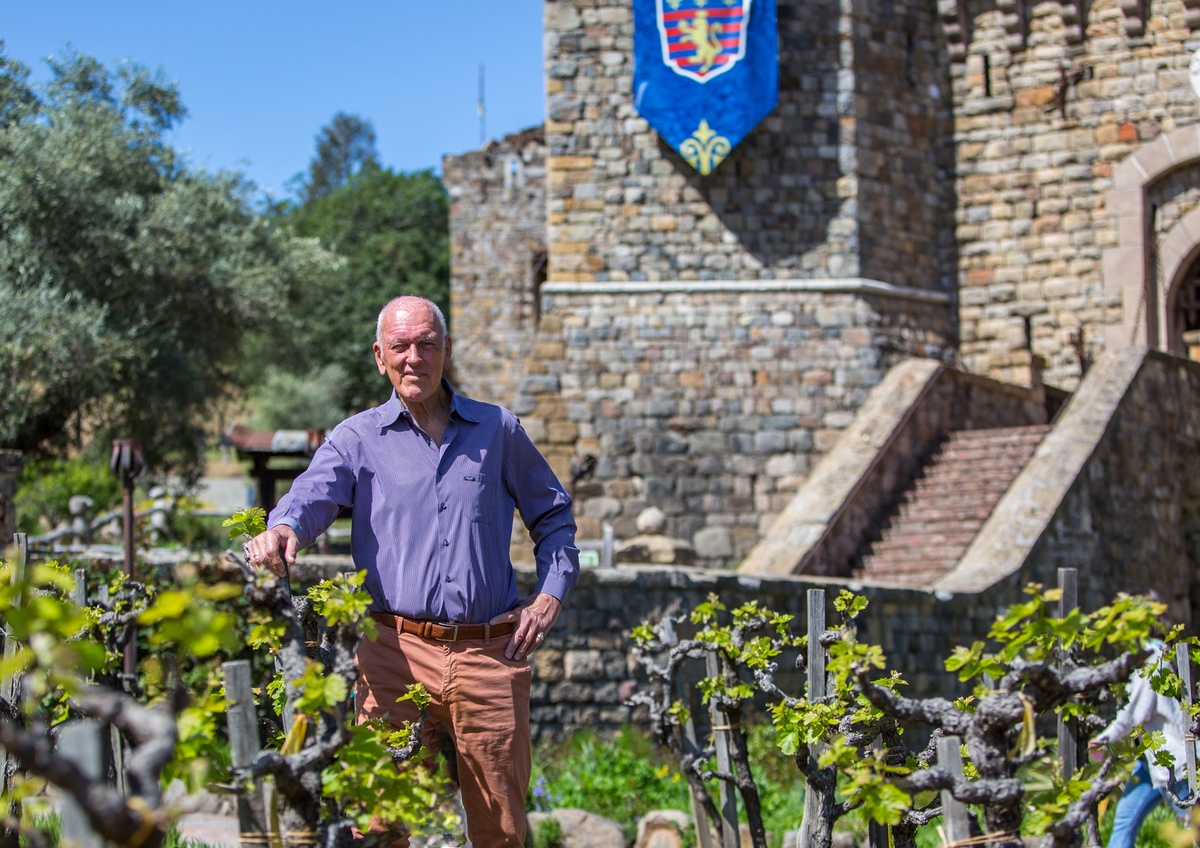
Other accolades include being recognized as one of “Napa’s Most Beautiful Wine Tasting Rooms” by Food & Wine Magazine, as “Best Wine Tasting Room” by North Bay Bohemian, as “Best Place to take visitors” by KVON Radio, as one of the “Top 5 Romantic Spots in the Napa Valley” and as one of “Ten Most Intriguing Architectural Wineries in Napa” by Napa Valley Life Magazine, in addition to receiving several Certificates of Excellence from Trip Advisor.
The Castello suffered an enormous setback in October of 2020, when a detached building of the Castle was destroyed by the Glass Fire: Sattui and his team are bent on restoring it just the way it was. Estimated completion of the restored wing is late 2023.

Castello di Amorosa used materials such as antique, handmade bricks and roof tiles, hand-hewn timbers, hand-forged iron gates, lamps and hardware and medieval construction techniques and over 8,000 tons of hand-chiseled local stone to create this architectural gem. Sattui designed most of the winery himself; it is not a replica of a medieval castle but rather a uniquely conceived one-of-a-kind building. The 150,000 square-foot castle / winery consists of four floors above ground and five floors below ground. It encompasses five defensive towers with battlements, 1,000-pound hand-hewn doors from Italy, a Great Hall with a 22-foot coffered ceiling featuring hand-painted frescoes inspired by medieval Italian frescoes. The castle’s 12,000 square foot Grand Barrel Room features 40 Roman cross-vaults in its brick ceiling. All of the ironwork was hand-forged by Italian artisans over open flames on site during the construction. Over 170 containers of handmade antique bricks, roof tiles and antique furniture were brought from Italy for the building. Additional authentic features include multiple courtyards, a chapel, the drawbridge, a watch tower, a torture chamber and secret passageways.
The winery itself is a modern contrast to the Castello as a whole. It contains advanced crushing and fermentation facilities, five underground levels and 24,000 square feet of caves all for barrel aging. Winemakers Brooks Painter and Peter Velleno have a wide range of equipment available to them, ranging from custom-designed triple-jacketed cooling fermentation tanks to concrete/ceramic eggs. Read more below about the construction of the Castle.
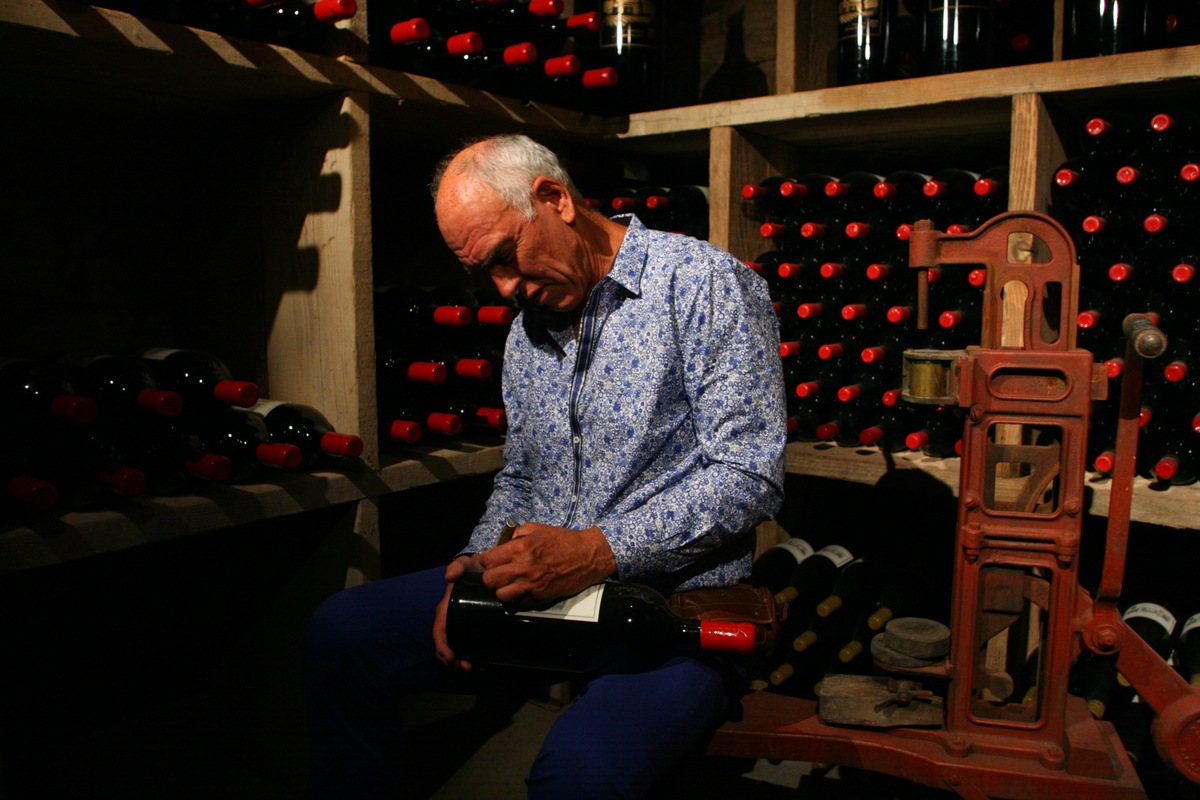
In 1993, I purchased the spectacular property upon which I built Castello di Amorosa. It sat on a hundred-seventy beautiful acres of forest and hills with a stream, a lake, one of the first houses built in Napa County and a great Victorian home where I chose to live. It was my dream property, culminating a search of many years. The purchase also came with a great building permit for a large winery building which had taken the previous owner thirteen years to obtain.
My initial intent was to build an 8,500 square-foot building without cellars. (Gradually it morphed into 121,000 square feet with 107 rooms with four separate levels underground and four levels above!) After more than 15 years of research, I was ready to build my castle in the Napa Valley.
I had accumulated a wealth of knowledge on medieval architecture, a huge library of books, photos, plans and detailed sketches. I couldn’t wait to get started. The renovation of my historic Victorian at the bottom of the hill on the same property would have to wait. I was going to build my castle first.
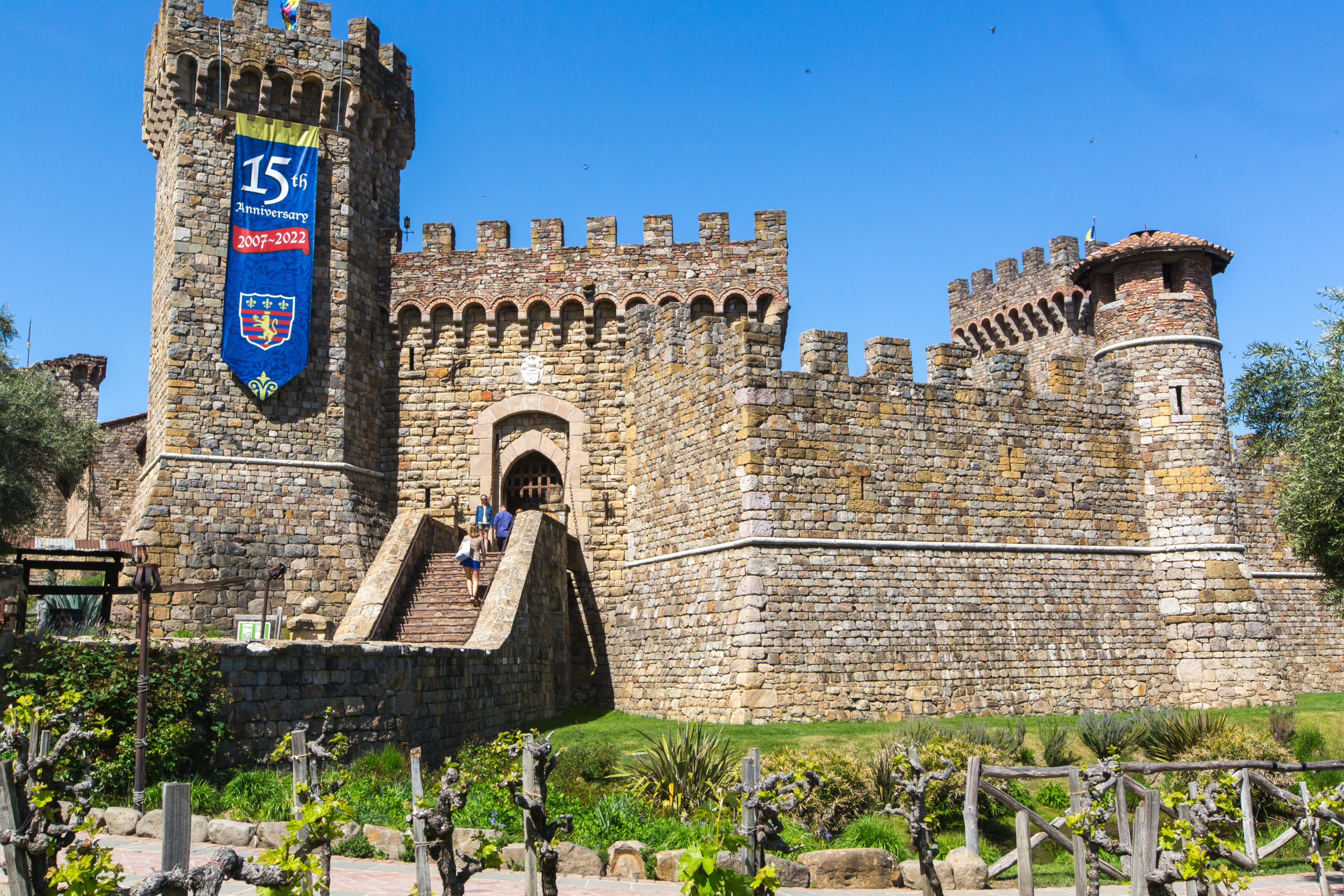
Within a short time of acquiring property on which I would build, Lars Nimskov, the naval architect from Denmark, came from Italy and we began working on plans which were submitted and approved by Napa County a year later.
Castello di Amorosa appears to be an authentic castle for one reason only: it is an authentic castle, though fancified. We either used construction methods and materials that would have been used 1,000 years ago, or we used very old hand-made materials that had survived up to modern times. A fireplace predating Christopher Columbus adorns the Great Hall, and Iron Maiden from the late Renaissance dominates the torture chamber. A wrought iron dragon from the times of Napoleon hovers over the massive main door. More than 8,000 tons of stone were chiseled, not sawed, by hand to be absolutely authentic. Nearly 200 containers of old, hand made materials were shipped from Europe to lend authenticity.
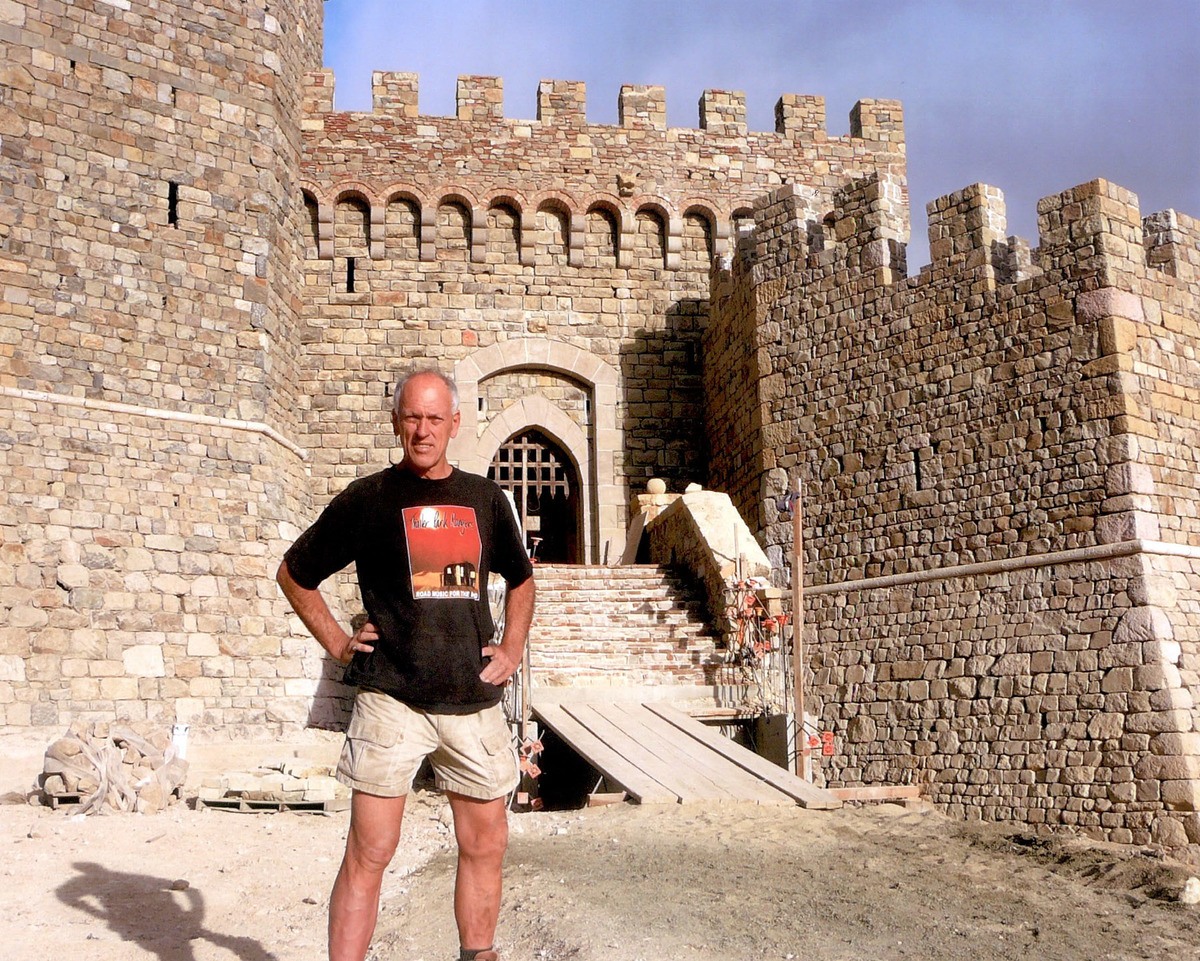
Finally, we were able to open on April 7, 2007. I had no idea if the project would be well-received or not. Would I be laughed at or would people respond positively? The first few days after opening gave me hope. The response to both the Castle and our wines was overwhelmingly positive.
When we opened the doors fifteen years ago, I wondered how my castle would be received, as it was so unorthodox a concept. Today we have a collection of superb estate vineyards and highly acclaimed wines. Just recently our Morisoli-Borges Cabernet Sauvignon received 98 points from Jeb Dunnuck and our single-vineyard Melanson Cabernet Sauvignon received 97 points from The Wine Advocate. Our wonderful guests respect and enjoy the fact that our wines are only available at the winery or can be shipped directly to your home or business.
Thanks to you, my dreams have come true. Both the Castello and the wines have received great reviews. I encourage everyone to come visit and celebrate our 15th year in business. Thank you again for your continued support. We invite you to come visit and help celebrate our 15th Anniversary in the Napa Valley.
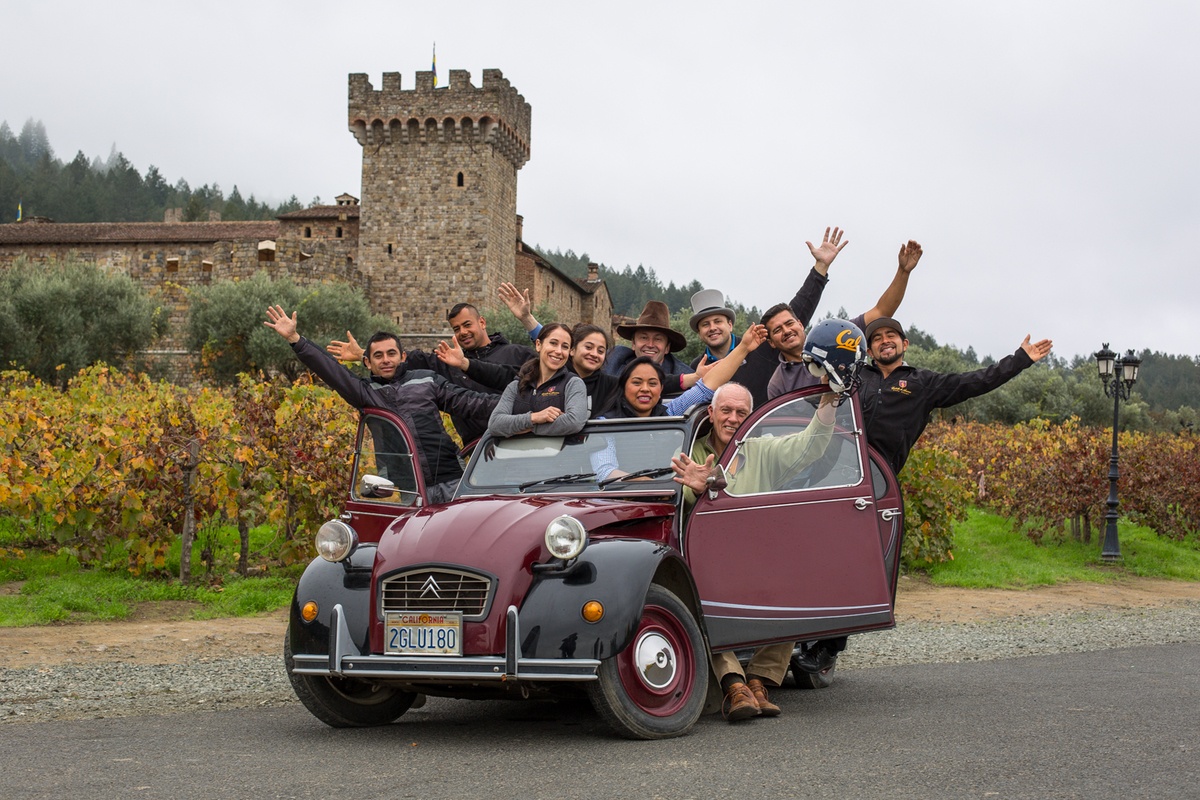
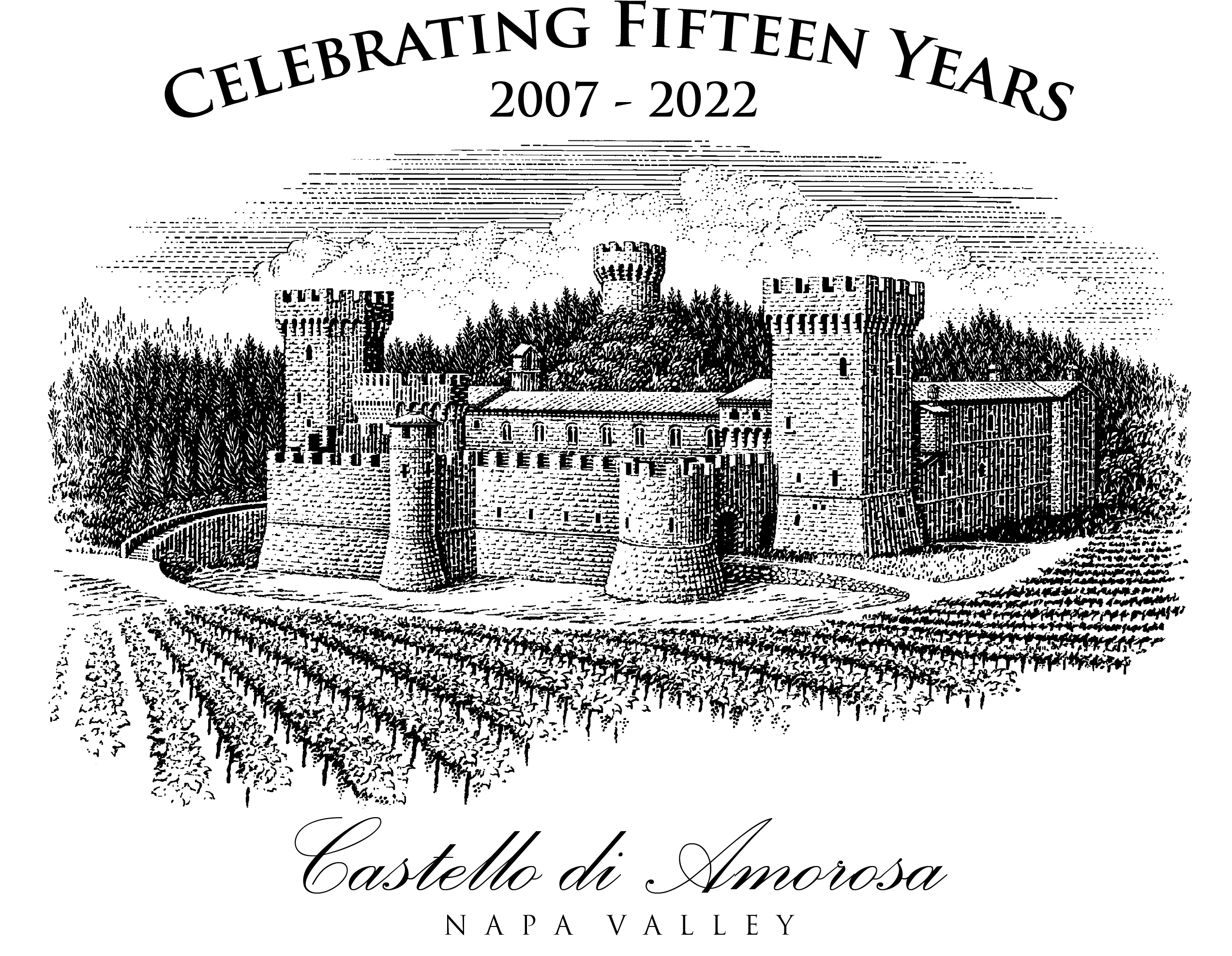
♦ Solar Grid Installed
We invested $1.4 million in a 450-kilowatt solar power array.
♦ Disney Films The Quest
During Covid-19 The Quest was filmed on location at Castello di Amorosa.
♦ Manley Estate Vineyard Acquired
Located in the Rutherford AVA of Napa Valley, we hope to get our first Manley Estate vintage in 2025.
♦ Castello Closed for 1st Time
Covid 19 & The Glass Fire forced us to close the Castello for the first time.
♦ Named Best Tasting Room in America
Voted Best Tasting Room in America by USA Today’s 10 Best.
♦ The Castle Hosts Festival Napa Valley
Breathtaking performances in iconic wine country, are paired with Napa Valley’s unparalleled food, wine and hospitality. Festival Napa Valley offers programs that uplift and inspire, and attract artists and audiences from around the world. The annual July celebration raised $2.6 million, a new record.
♦ We Celebrated Our 10th Anniversary
In 2017 we celebrated our 10th year in business.
♦ Highest Scoring Wine to Date
Our 2017 Melanson was scored 98 by Wine Enthusiast Magazine.
♦ Our Popular Butala Estate Club Established
2016 was the year we purchased Butala vineyard from Letterman star headman Tony Butala. Our estate club of the same name was established the same year.
♦ Brooks Painter Named Winemaker of The Year
Our head winemaker Brooks Painter was named head winemaker of the year in 2014 by The American Fine Wine Competition.
♦ 1st Vintage of our Acclaimed Cabernet Sinalunga
2012 marked the first year that we made our ultra premium Cabernet Sauvignon Sinalunga, inspired by the abandoned Castles from the Sinalunga countryside.
♦ Pixar Movie Brave Premier at The Castle
The event saw a total of 2,400 people attend a screening of Brave.
♦ Named Best Restroom in America
Winners of the 10th annual Best Restroom in America contest.
♦ Grape Juice Program Starts
We wanted to do something special and offer something to the non-alcohol drinkers & children that come visit Castello di Amorosa each and every year.
♦ Bachelor TV Show is Filmed
The popular television show The Bachelor was filmed at the Castle in 2008.
♦ Our Beloved Goat Giacomo Rescued
“This is dense and intense with a beautiful velvety texture and ripe fruit, but it remains fresh and clean. Full body. Textured finish. Better in 2016.”
♦ Pagan Ball & Masquerade Ball
We started two beloved events at the Castle.
♦ Bedtime Stories Movie is Filmed
“SBedtime Stories was filmed at the Castello in 2008 staring Adam Sandler.
♦ The Castello Opens
Construction is completed and we have our first paying customers.
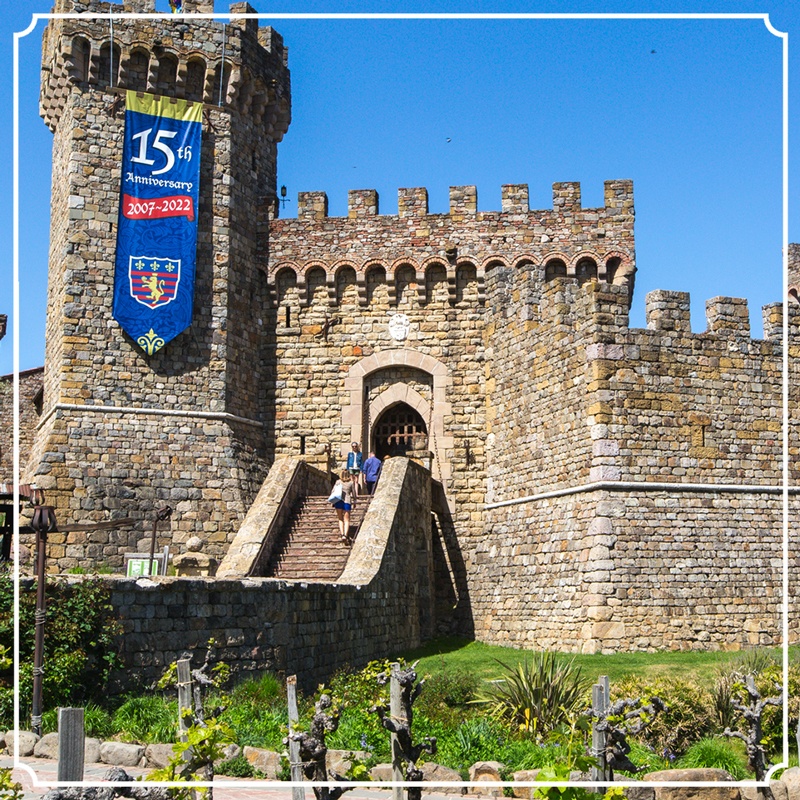
A History of the Project - Part II

Dario Sattui
A History of the Project – Part 2
By 1994, I had the person willing to teach us medieval building techniques, Fritz Gruber from Austria, and I had the quasi-experienced builder from Italy, a Dane named Lars Nimskov, who understood what I wanted to do and was willing to stay the duration.
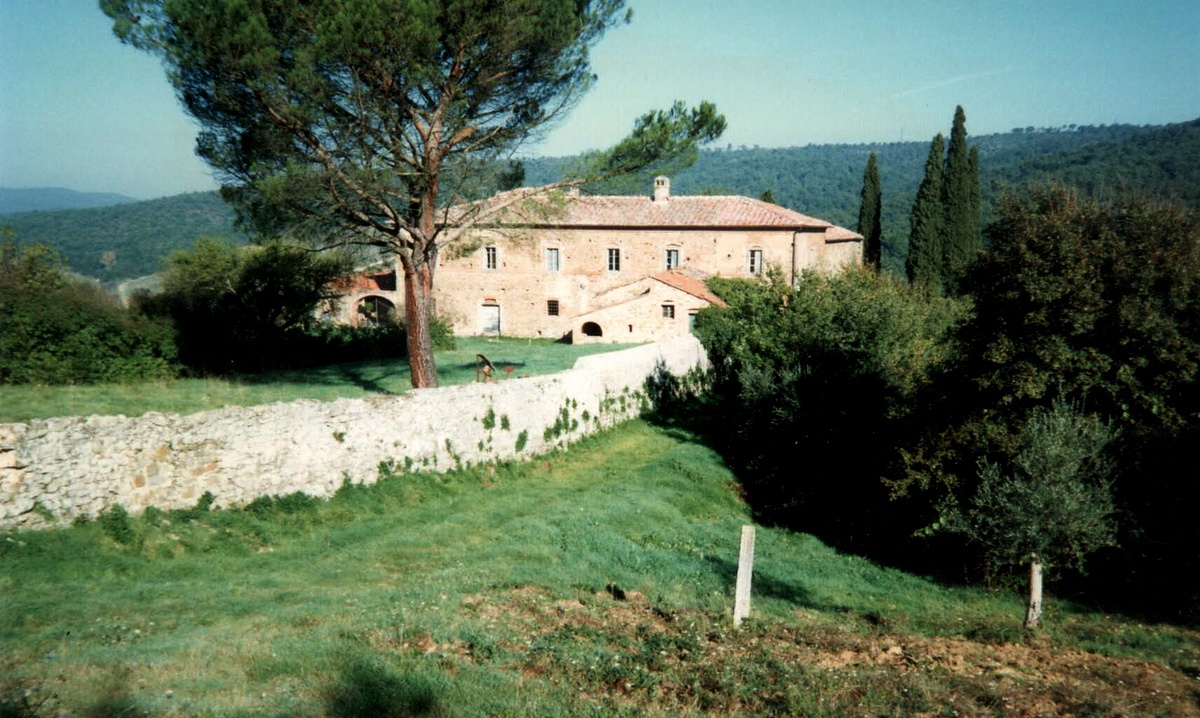
Monastero di Coriano, Dario Sattui’s home base for researching medieval buildings. (Photo: Dario Sattui, 1995)
Gruber also sold ancient, handmade European bricks. Further, I had spent years, even before I knew I was actually going to build something, researching where to get raw materials. I searched in South America, Israel, and in much of America and Mexico and throughout Europe. Over a duration of many years, I had acquired a wide source-list of addresses for the materials I needed to build my castle.
In the 1980’s and 90’s, I was going to Italy for as long as three months at a time. In fact, in 1989, I moved to Rome for six and a half months. While there I made a promise to myself, a promise I had considered for years, to purchase an Italian property before departing to Rome. With little time left, I made a frantic search over the remaining weeks. I decided I didn’t want a property in Lazio, the region of Rome, instead deciding on Umbria or Tuscany, which I found to be infinitely more beautiful.
My First Castle … In the Florentine Hills
I went with several realtors day after day, from morning to night, looking at properties. Finally I found it, a small 12th century castle, Castello di Panzalla, just 12 miles outside of Florence in the hills of Chianti Classico and that had once belonged to the cousin of the King of Italy. I bought it, along with 220 acres and four farmhouses that came with the property. I negotiated the entire transaction in Italian with out a lawyer, relying on the German realtor living in Chianti.
I was full of exhilarating ideas to restore the castle to its former glory. But, a short time after I returned to the U.S., the castle was severely vandalized and burglarized. Ancient, dated plaques were ripped out of walls, old roof tiles and all the 300 year old interior doors stolen, virtually every window smashed, ancient coat of arms torn from walls, the entrance door destroyed, hand-chiseled pavement stones dug up. Anything of value and portable was hauled away. I was devastated. My dream had been destroyed; and I didn’t want Castello di Panzalla any longer. I put it up for sale. I thought selling the property would take ten years. There are not a lot of buyers for castles.
The following year, 1990, I went looking for more property with the German real estate agent, whom I wholeheartedly trusted, never believing him to be absolutely disreputable as I was later to discover. For three weeks, night and day, I searched. One day I came upon a 10th century, fortified, Augustinian monastery dominating the hillside in the countryside just 23 miles east of Siena on the road to Perugia. I knew within a half an hour that I would buy it. The only question was the price. It was totally run down, with mounds of garbage everywhere. My wife hated it, but I could envision what it had been and what it could be; and I loved it. Out of what was to become my bedroom window, I had the most perfect view in the world — golden fields, stone farm houses, lush vineyards, rolling hills, two castles and another monastery. I was in heaven.
After buying my monastery and naming it Monastero di Coriano, my dog Pipo and I set about restoring it. I could have written “Under the Tuscan Sun,” myself, but with some different twists. It was by using Monastero di Coriano as a home base that I began diligently researching medieval buildings.
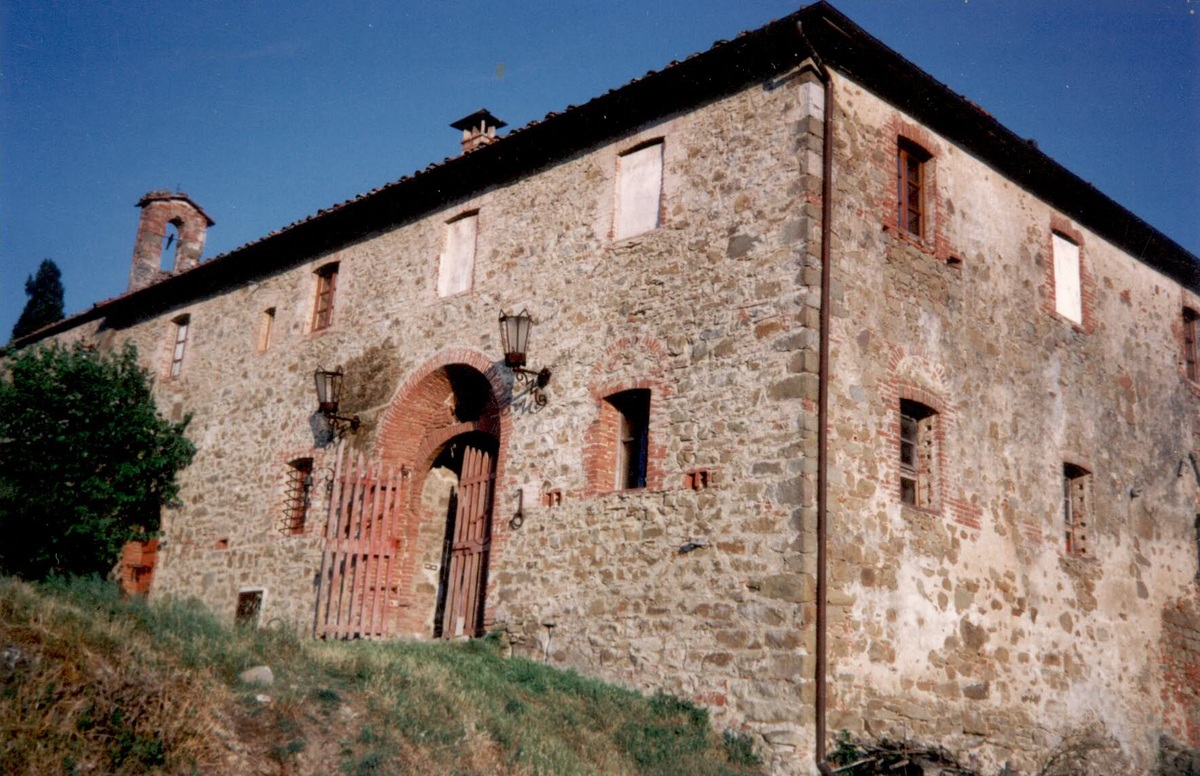
Main gate and tunnel to the interior Courtyard. (Photo: Dario Sattui, 1992)
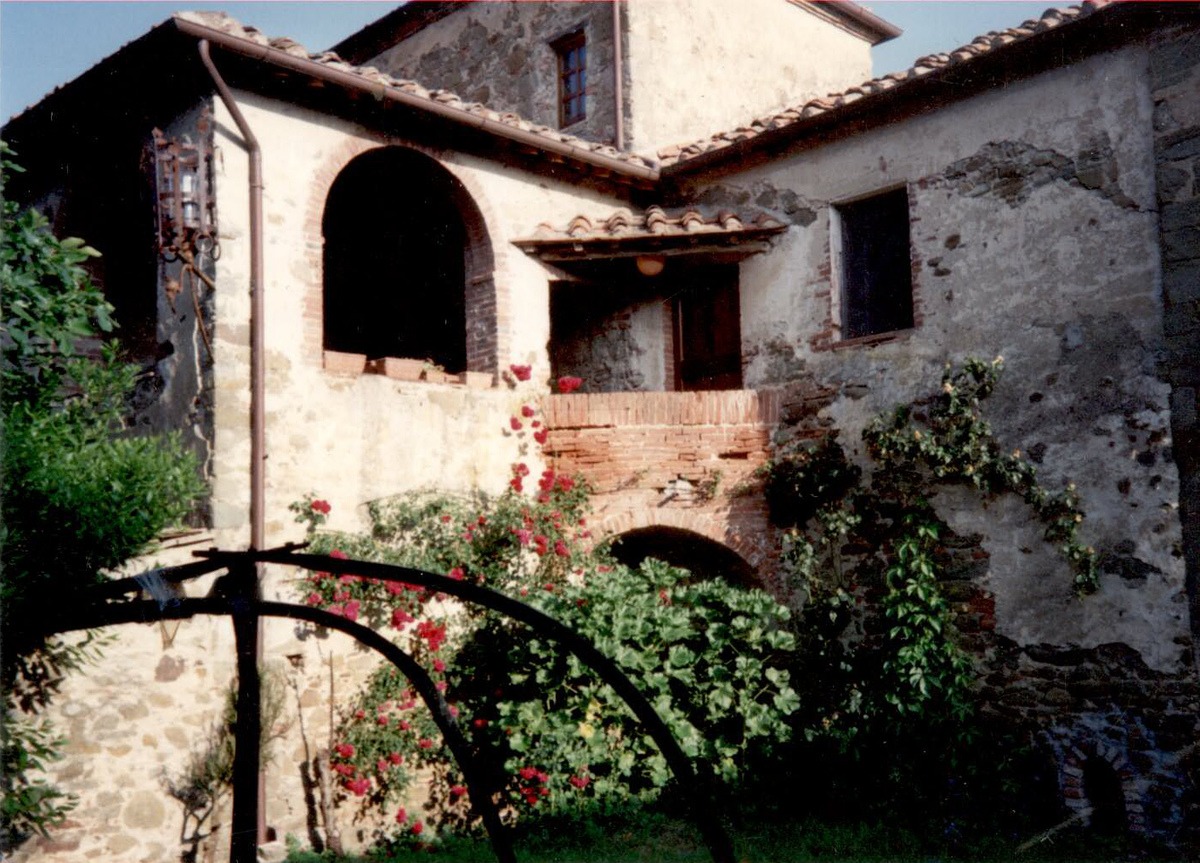
View from Courtyard. (Photo: Dario Sattui, 1992)
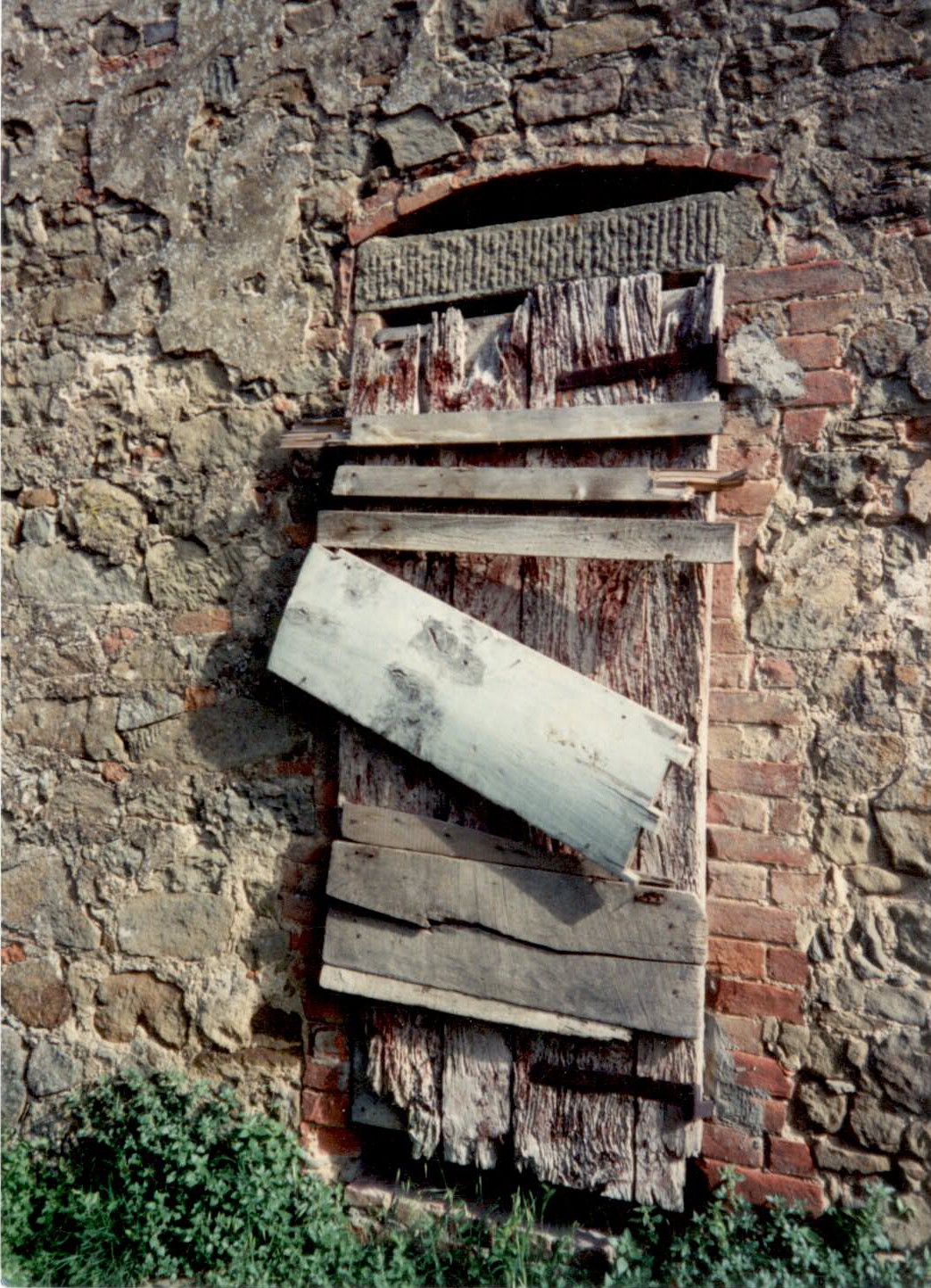
Old kitchen door (Photo: Dario Sattui, 1992)
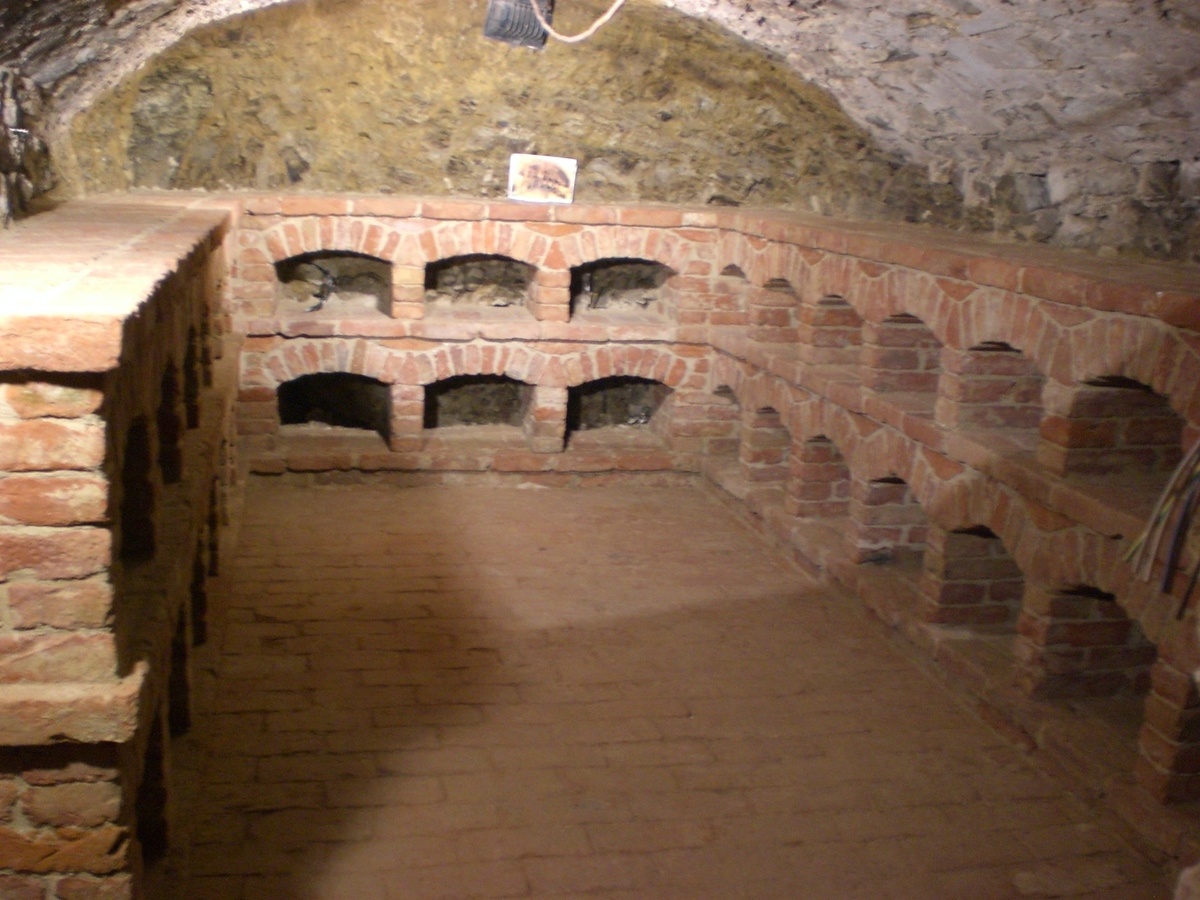
The wine cellar deep under the Monastery. (Photo: Dario Sattui, 1995)

300 year old church door. (Photo: Dario Sattui, 1992)
I would get on my motorcycle or in my car before dawn, day after day, with a backpack containing a hammer, a tape measure, camera and film and sketchpad and pencils. I would return home after dark having seen and thoroughly inspected, studied, measured, sketched and photographed every detail of what I had discovered. The hammer was used in case I had to break in.
It must be remembered that twenty years ago there were a lot of abandoned farm houses, palaces, churches and castle in the countryside of Umbria and Tuscany. The rural population had left en masse in the late 60’s and 70’s to escape the tedious and uncomfortable agricultural life without amenities to live in modern rented cement boxes called apartamenti in the cities, where they’d have wall-to-wall carpeting, running water, and central heating. Here they found work in factories such as Fiat or Olivetti.
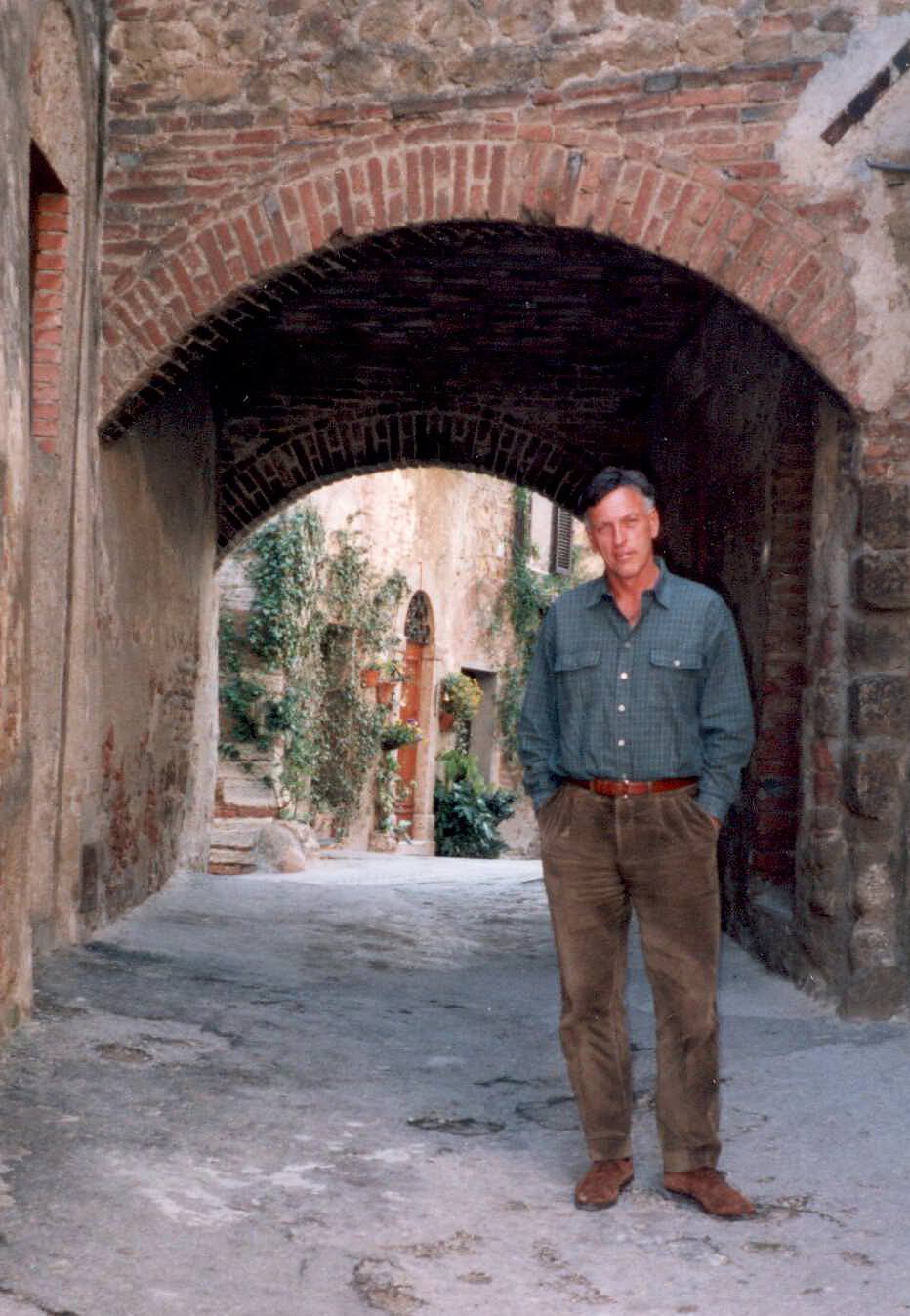
Dario Sattui in the entrance to the Monastery in 1995.
As a result, there was a plethora of medieval buildings, great and small in the countryside waiting to decay or be restored. The Italians seemed to want no part of restoring them; they were happy to part with them for a song. It was mostly the English, the Germans and the Swiss who discovered these treasures and began buying them up cheaply to restore. In short, it was foreigners who saved the countryside of central Italy.
When I couldn’t walk or pry open a door or window, my insatiable thirst for knowledge about these buildings forced me to be clever. I would dress up in a suit and tie and go to prominent realtors pretending to be a wealthy person wanting to buy a castle on the market. I was even given ancient building plans, but of course, I bought none of these properties. I only wanted to study these masterpieces, and I had no idea why. Something inside me compelled me to do it.
Without realizing it, I was slowly acquiring the knowledge that would enable me to build my own castle….
To be continued…
A History of the Project - Part I

Dario Sattui
A History of the Project: Building a Medieval Castle in Napa Valley
In 1993, I purchased the spectacular property upon which I built Castello di Amorosa. It sat on a hundred-seventy beautiful acres of forest and hills with a stream, a lake, one of the first houses built in Napa County and a great Victorian home where I chose to live. It was my dream property, culminating a search of many years. The purchase also came with a great building permit for a large winery building which had taken the previous owner thirteen years to obtain.
At first, I had no intention of starting another winery- I already had V.Sattui. My plan was only to replant historic vineyards there. However, throughout my adult life, I had been fascinated with Italian medieval architecture; and, because of my passion- some would say obsession- I had already bought a handful of ancient properties in Italy, including a small castle near Florence (now sold), a medieval monastery near Siena (now being refurbished) and a Medici palace in southern Tuscany, which we are remodeling into a period hotel. You get the picture- it’s an incurable malady.
My ideas began to crystallize. I would specialize in making small lots of primarily Italian-style wines, showcase them in an authentic, medieval castle setting and sell them directly to the public, not in stores or restaurants. Since I have never had a television, I had a lot of time on my hands. In early 1994, I embarked on my project. Concurrently with replanting thirty acres of vineyard on the property to Sangiovese, Cabernet and Merlot, I began drawing plans for the winery building.
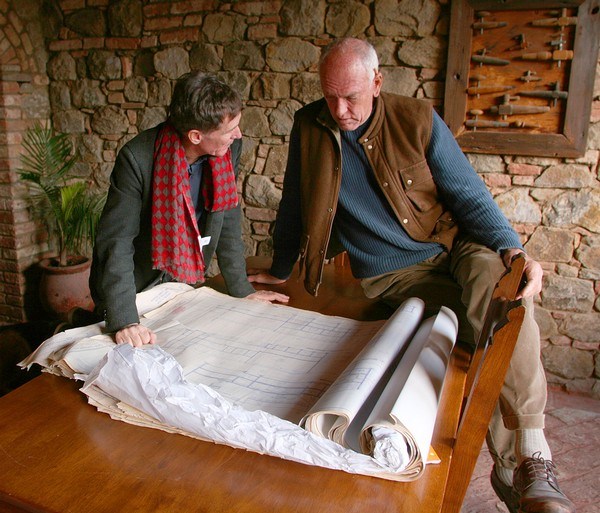
Paolo Ardito and Dario Sattui review Castello di Amorosa building plans in December of 2010. (Photo: Jim Sullivan)
My initial intent was to build an 8,500 square-foot building without cellars. (Gradually it morphed into 121,000 square feet with 107 rooms with four separate levels underground and four levels above!)
As a hobby, I had spent years visiting and studying medieval architecture, collecting thousand of detailed photos and measurements. I obtained building plans of Italian castles; I even pretended to be an interested buyer, dressing in suits to get realtors to show me through castles I would have never seen otherwise. I was determined to bring a slice of Italy I loved to the Napa Valley.
Tell me I can’t do something and, if it is important to me, I will try to prove you wrong. My greatest incentive to do this project came in Beaune, France, in 1984 when the idea was still germinating. I was in Burgundy visiting the greatest wine cellar I had ever seen, that of Patriarch cellars, built over two hundred years in the 13th and 14th centuries. It contained over seven acres of underground cellars and rooms. I was in heaven.
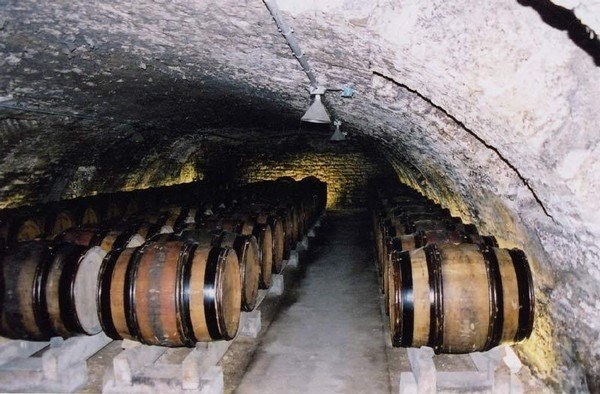
Wine barrels in Patriarch Cellars (Photo: Blanca & Ian’s Travels)
I was the first person to arrive one day, equipped with a camera, plenty of film, a tape measure, my sketch pad and plenty of sharpened pencils. All day I studied the cellars, essentially drawing and photographing with precision every room that moved me. I didn’t know why I did it.
About every hour, the elderly watchman would walk by me, observe my actions and continue on. Finally, late in the day, he came up behind me, grabbed me roughly on the shoulder and forcibly threw me out, the while haranguing me loudly and coarsely in French. I was shocked and embarrassed. As he finally let go of me at the outer door, all I could sputter was something like, “I’m going to do something like this in the United States one day, you…. No, even better!”
I doubt he understood me; and of course I had no intention of doing such a thing at the time. I only knew that I wanted to and I never forgot that man or the motive he gave me to eventually embark upon this project. I’ve always thought of going back and showing him what I had accomplished, but I’m sure he is long gone.
Now, I had only built a dog house, a chicken coup and a rabbit hutch in my life; so I needed an accomplished builder who understood what I wanted and could implement my dream. I not only found one, I found two of them.
I was on my motorcycle, doing what I did virtually every day I was in Italy, searching for castles, monasteries and palaces to study, measure and photograph. (If someone accompanied me, they never came twice!) I’d start each day before dawn and travel road after road until I found something of interest, usually returning after dark.
On this particular day I was trespassing on someone’s property, taking a shortcut to a castle I had seen in the distance. I always ignored “Private Property” signs, and, when confronted, would feign that I didn’t understand Italian. The owner came out of the house. “You are trespassing,” she said. “Were I in a bad mood, I would throw you off the property. But I’m in a good mood… would you like to taste the wine we make here?”
Her accent told me she was not Italian. She explained that she and her husband had first emigrated from Denmark to the U.S., then moved to Italy to realize their dream of a small winery and olive orchard. During our conversation, though, three salient points were made: her husband was a naval architect, he had built their two houses (which I could see were new but appeared centuries-old) and, as importantly, he’d always talked about returning to the U.S.
After lunch, I decided to telephone this man, knowing the chance was slim that he would share my vision. We talked an hour and a half and I finally asked him point-blank, “How would you like to come to the United States and help me build a castle?”
He suddenly blurted, “I’ll come.”
“But you haven’t even consulted your wife,” I said. And he loudly and sternly responded, “I said I will come!” I was too taken aback to probe further.
A lot of people talk and do very little. I was not at all convinced that he meant what he said; and, although we spoke several more times over the next few weeks, I had my doubts about him showing up. Unbelievably, on the appointed date, Lars Nimskov arrived at my home in Calistoga; and we set to working on castle building plans immediately.

The Grand Barrel Room at Castello di Amorosa (Photo: Peter Menzel)
To really pull this project off, we needed more help. Luxury Tuscan-style homes are currently the rage in California and I have seen countless attempts to reproduce them authentically; but most have failed to a lesser or greater degree. You either understand how to build them, using old, handmade materials and ancient techniques, or you don’t, in which case they look fake. Either people don’t want to spend the money, the architects and builders don’t have the skills or they use modern techniques and materials to attempt a medieval look. I vowed to build a castle as I made my wines, without compromise. It would be done as realistically as possible; but to do it right we needed someone who actually had a lot of experience with medieval castle construction.
I found him, too.
Fritz Gruber, a master builder from Austria, had, like me, grown in love with medieval architecture and spent countless hours studying how to do it. He built small wine cellars for friends, using old world materials and techniques. He then decided to expand his business.
In 1988, I’d received a simply illustrated wine cellar brochure from Austria. I loved what I saw; but I had neither the money nor the property, so I filed it away. Shortly after I purchased the Calistoga property in 1993, I traveled to Austria and took along the then-worn brochure, hoping to find Gruber, which I finally did in a small village near Vienna. He opened the door, speaking only in German, but doubled over in laughter when he saw the brochure. He explained to me that he had sent 2,000 brochures to winery owners in the U.S., hoping his business worldwide, but received no replies. Five came back postmarked, “wrong address.”
Gruber saw immediately that I was as passionate about medieval architecture as he was. We started talking and I told him of my dream. “A wine cellar I can understand,” he said, “but a whole castle?”
He said I was as crazy as he was and we instantly took a liking to each other. He showed me underneath his house where he had built a labyrinth of medieval vaulted cellars. I loved them. I stayed at his house and we talked for three days. He agreed to come with six of his Austrian masons and stay for three months building the first two rooms, so our crew could learn from them. “But you are absolutely crazy!” He declared as I finally left.
I was naive enough to think I was ready to begin. My plan was to incorporate all the ideas and details that I had assembled from my first trip to Italy in 1965 in my 8,500 square-foot winery. I would create a fantasy, a maze where every room and space opened into a new and different adventure as one traveled throughout the building. I would include all the elements of a true medieval castle- a moat and drawbridge, high walls and towers on a hillside, a great hall, courtyards and loggias, an apartment for the nobles, a big kitchen, an outdoor brick oven for baking bread, a church, a horse stables, secret passage ways and, of course, a prison and torture chamber.
I was determined to erect the most beautiful and interesting building in North America for showcasing great wines; for it must not be forgotten that, aside from being defensive fortifications , throughout history and in modern times, many of the great wines in Europe have and are being made in castles.
The only problem was that 8,500 square feet would only contain a fraction of my ideas…. (To be continued…)
